If you’re looking for a WordPress page builder, you must have heard about Beaver Builder and Divi Builder as these two are among the most popular page builders on the market.
Both page builders are built to keep the design accessible to all users including complete beginners and experienced professionals.
But which of these two is better – Divi or Beaver Builder? To help you decide, we will take a detailed look at each page builder and discuss their main features such as visual editor, ease of use, content modules, and pre-made templates.
By the end of this post, you’ll have a complete comparison between Beaver Builder vs Divi to decide which one is the best page builder for your WordPress website.
Let’s get started!
🛠️ Check the complete list of WordPress Page Builders here ➡️
Overview: Beaver Builder vs Divi
Divi and Beaver Builder are both insanely popular page builders for WordPress.
Both are designed and engineered carefully to help beginners design their first site, and at the same time, they give full control to advanced users to be able to create whatever they want without any restrictions.
What is Divi Builder?
Launched in 2013, Divi Builder by Elegant Themes is a premium-only page builder that offers many unique solutions for designing WordPress websites.

Divi is also known for its theme, which is popular in the WordPress community and comes bundled with the page builder.
Elegant Theme’s strategic lifetime pricing of Divi makes it very enticing for users who want to stick to one theme and page builder with their WordPress websites.

Free Divi Test Drive
Explore the surprising power of Divi Visual Builder
What is Beaver Builder?
Beaver Builder is another reliable WordPress page builder with lots of customization options, and it is known for producing clean code, ease of use, and developer friendliness.
Beaver Builder is also multisite-capable, supports WooCommerce and is optimized for SEO (it supports Schema markup and code compression).
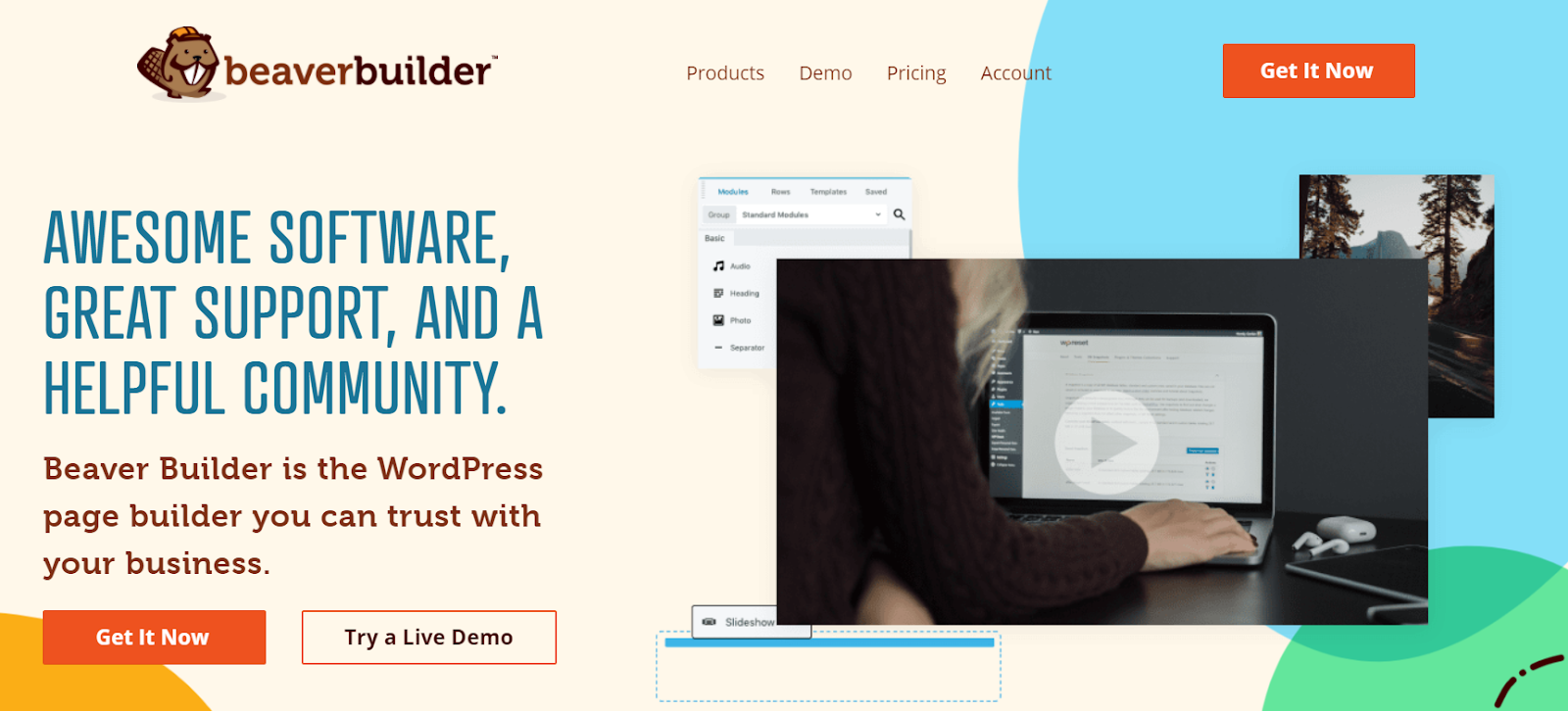
Unlike Divi, Beaver Builder uses a freemium model and offers a free plugin with the option to upgrade.
Here is a quick introduction video to Beaver Builder:
Frontend Interface
While both Divi and Beaver Builder offer visual frontend editing, they take a different approach. With Beaver Builder, you’ll do most of the work from a sidebar while in Divi, you’ll have to use floating options.
Beaver Builder Frontend Interface
Beaver Builder uses a sidebar format where all the content modules and related settings are shown in a sidebar.
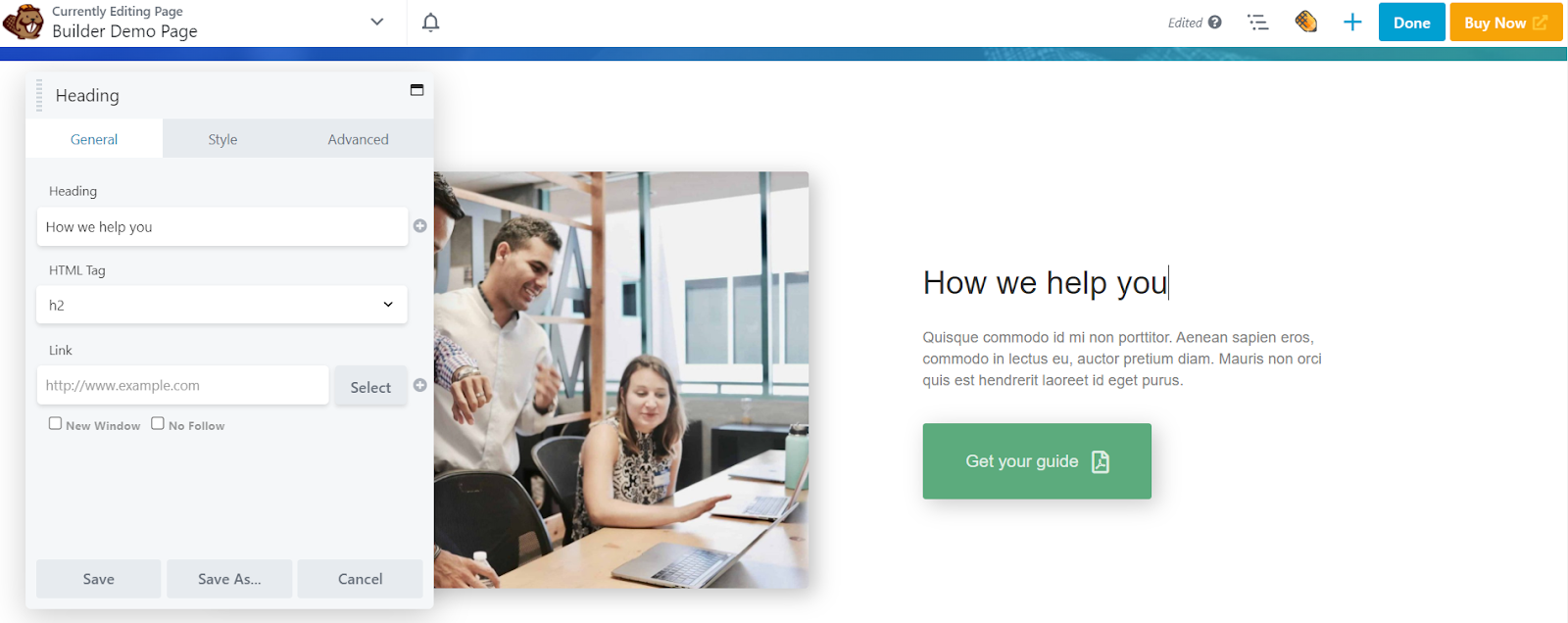
There’s also an option to move the sidebar to either the left or right of the screen, which is a unique feature and makes the workflow smoother.
Previously, the in-line editing was only supported by Divi, but now Beaver Builder also supports this so you can easily edit the text (just like you do in a MS Word or Google document) in any module.
Also, in Beaver Builder, you can drag and drop content modules to make new columns or rows, but in Divi, you have to create the rows manually.
Overall, the Beaver Builder editor is fast, and you can style all the aspects of the layout in the editor. It will take time to familiarize yourself with Beaver Builder, but once you pass the learning curve, things will become a lot easier.
Divi Builder Frontend Interface
Divi is a builder with backend editing support, but as page builders are known for visual editing, it’s not something you will be missing if you go with Divi Builder.
As for the Divi frontend interface, there is no sidebar, and all the content and settings options are shown in a popup on overlay on the site preview.
So with Divi, you don’t have to switch the sidebar on and off every time you want to check the site preview in full width.
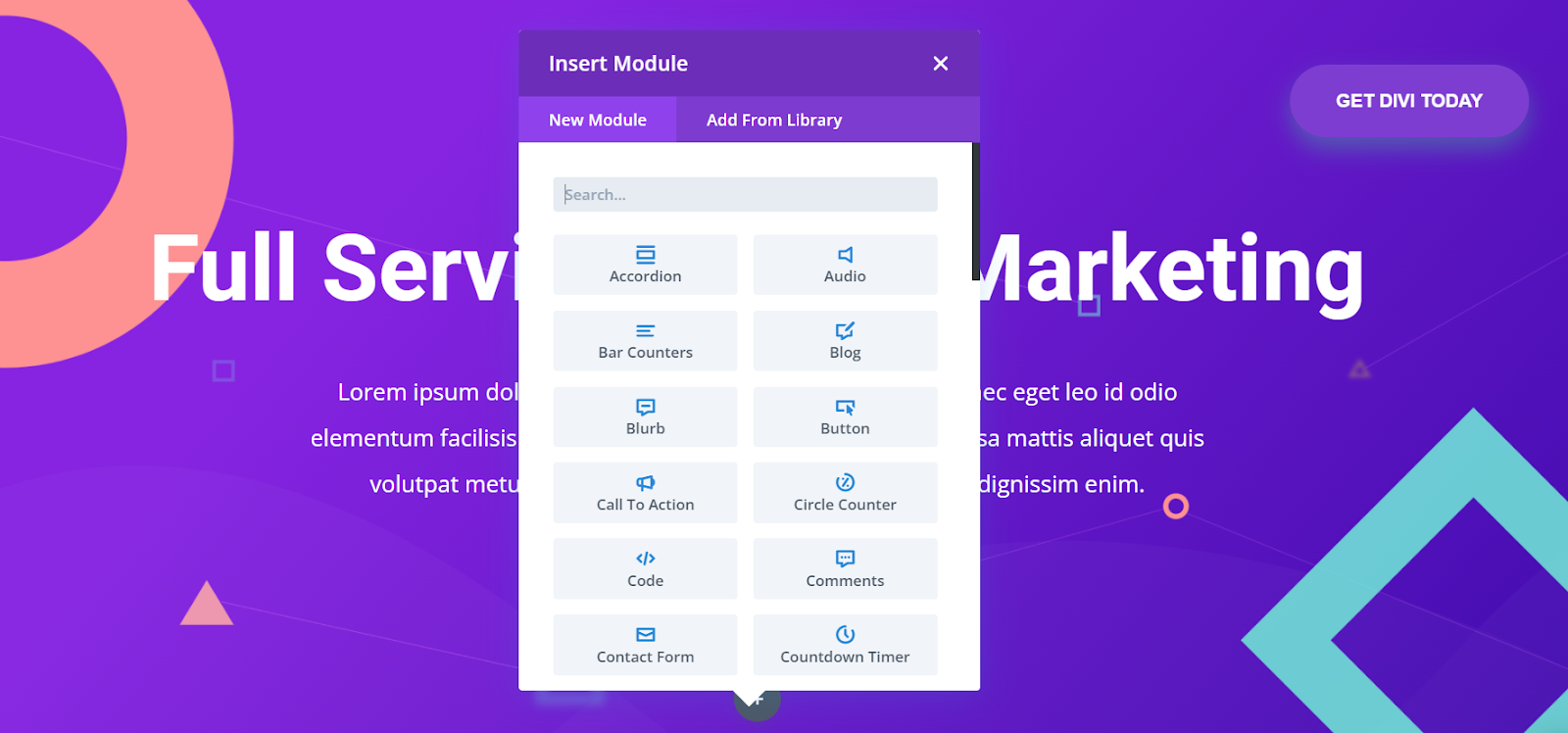
To add new content modules, you have to hover on the rows and columns, click on the + icon and simply drag and drop the desired Divi elements.
🔔 Note:
Along with powerful visual editing, Divi also offers an equally powerful backend editing option called Divi Wireframe View. In our opinion, Divi Wireframe View is the best WordPress backend editor currently available on the market.
⚡ Check also: Divi vs Elementor
Ease of Use: Divi Builder vs Beaver Builder
This part is extremely important as the whole concept of page builders revolves around ease of use.
Page builders are specifically created so that users can build fully functional websites without having to code anything.
And because of this, many developers now also prefer page builders as these tools make the website building process a lot faster compared to traditional HTML/CSS coding.
Beaver Builder Ease of Use
Once you install the plugin and activate it, Beaver Builder will welcome you with a special onboarding process, which is designed to give you all the necessary information in one place.
To start editing, you can drag and drop modules and then customize them accordingly.
While editing, you can add modules from the + icon on the top and put them anywhere on the page.
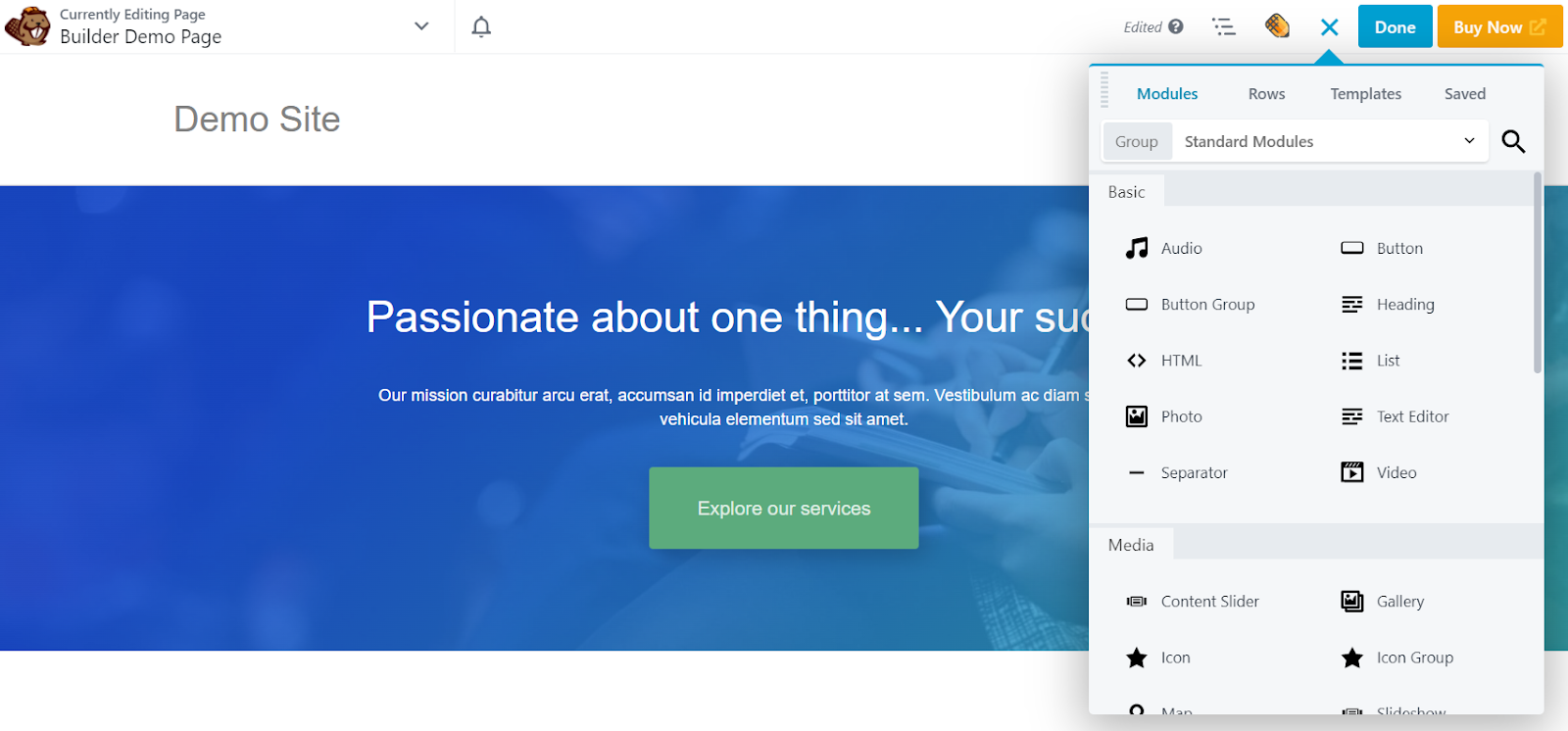
As already mentioned above, Beaver Builder supports multisite configurations so if you manage any multisite installs, you can easily handle the changes from one network-wide control panel.
Overall, Beaver Builder is easy to use with a simple design and effective placement of all the content modules and settings.
🔔 Note:
One issue you’ll find with Beaver Builder is that there is no dedicated option for the full-width template, so in case your theme doesn’t support full-width editing, you won’t be able to design 100% full-width pages.
Divi Builder Ease of Use
To start with Divi Builder, you can go to any page or post and select the Use Divi Builder option.
After that, you’ll get three options: build from scratch, choose pre-built layouts, or clone an existing page.
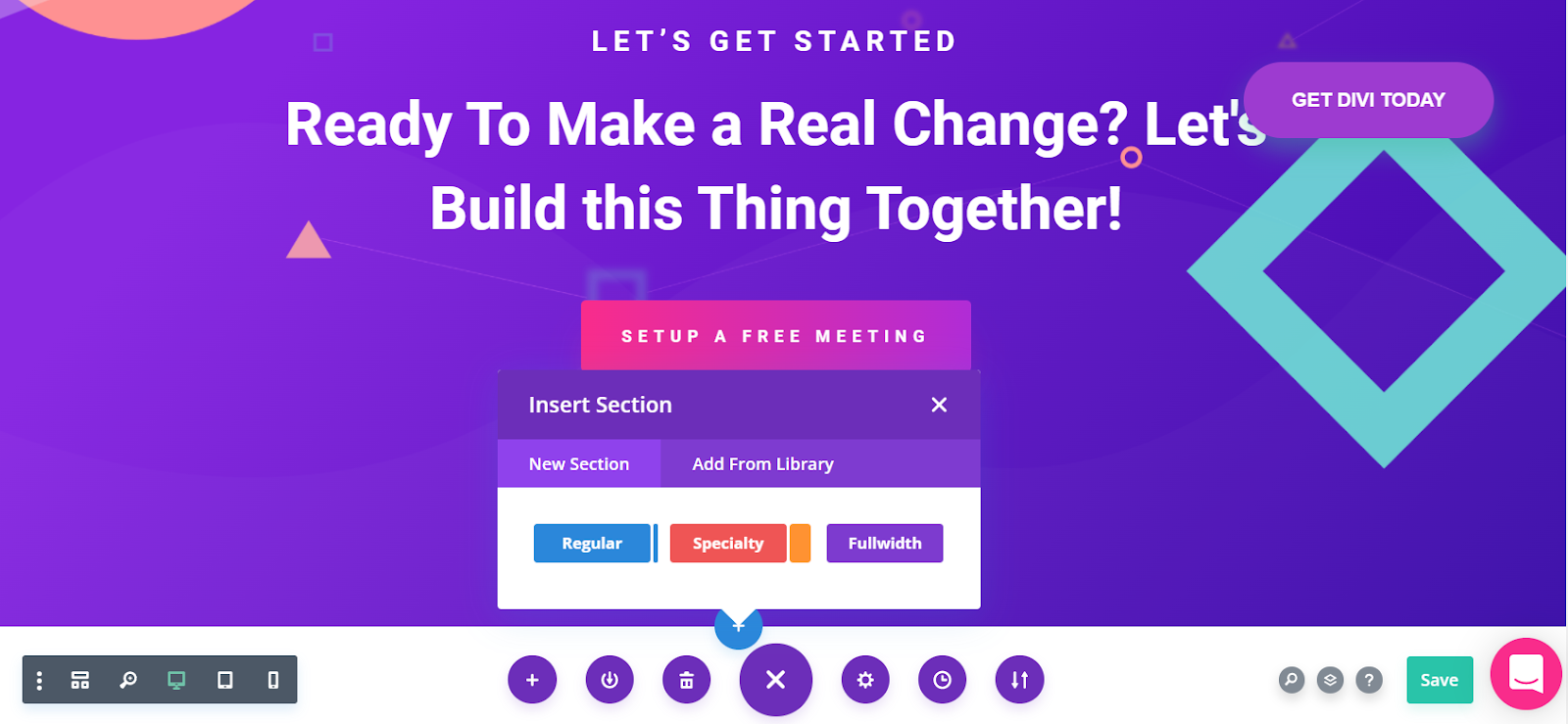
To add new Divi Builder modules on the page, you first have to set a section, then a row, and then the module.
This may sound a little difficult or even confusing, but once you get the feel of the builder, you’ll have no problems at all while editing.

As you can see above, there are three different + icons — a blue one for sections, a green one for rows, and a black one for modules.
Overall, you’ll find Divi Builder very intuitive, especially when working on long complicated pages as you can comfortably switch back and forth between frontend visual editor and wireframe (backend) view.
Content Modules
Content modules or elements are the building blocks that are used by all typical WordPress WYSIWYG editors.
Before you start building your website with page builders, it’s important to take a look at all their available modules and see what you have got.
In case you need something specific that is not included in the page builder, you will have to look for a third-party addon or plugin that solves this for you (which means extra hassle).
Beaver Builder Modules
You will get around 30+ modules with Beaver Builder, which is a little less compared to 40+ modules of Divi… but this, however, does not mean that Divi is particularly better.
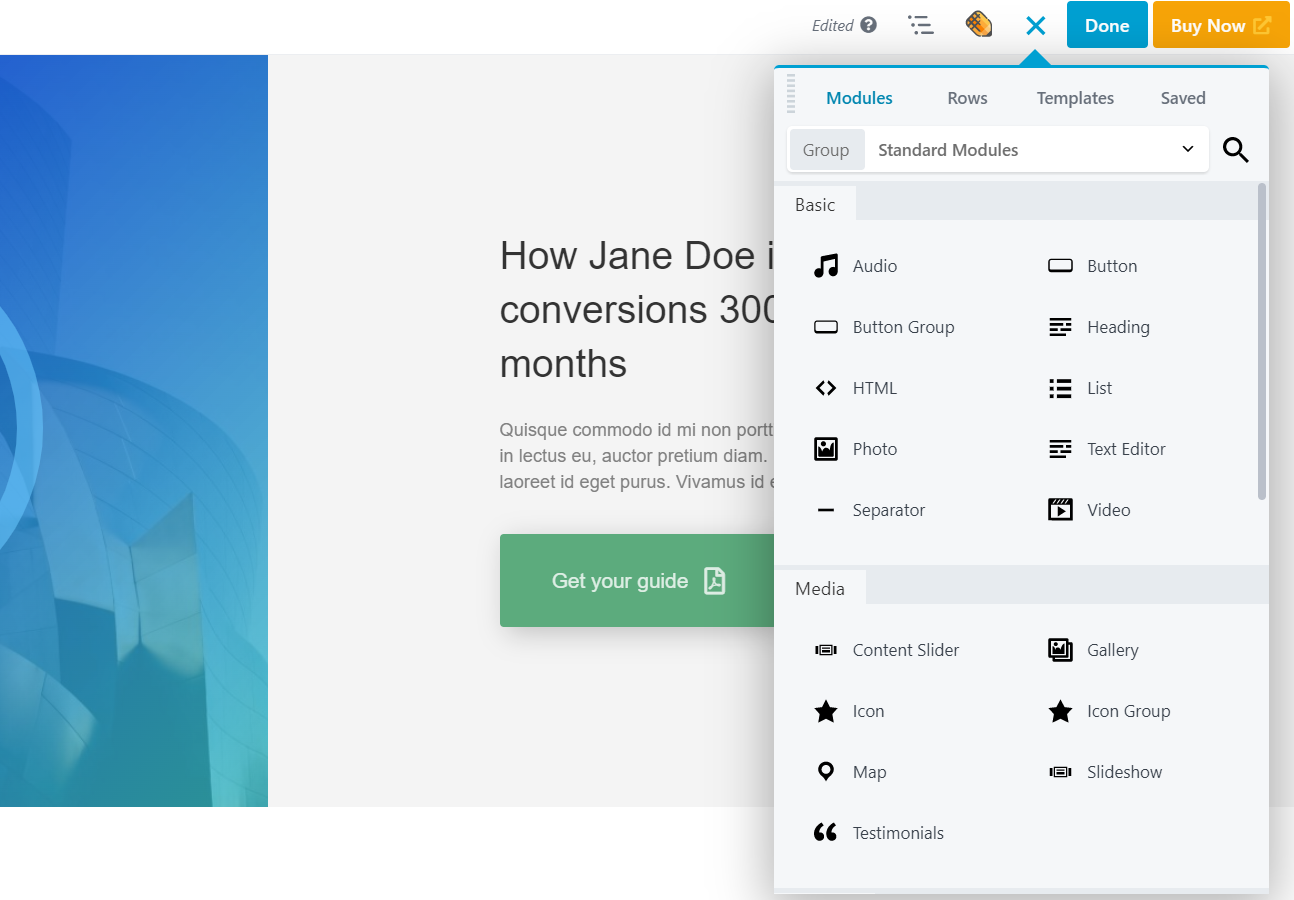
All the basic modules such as accordion, maps, posts, headings, buttons, CTAs, divider, image, HTML code, gallery, and more, are included with Beaver Builder.
That said, if you need something specific and you can’t find it among built-in Beaver Builder modules, you can always look for third-party add-ons, many of which are available for free as well.
Divi Builder Content Modules
As of now, there are over 40+ modules included in the Divi Builder, with new modules launched regularly.
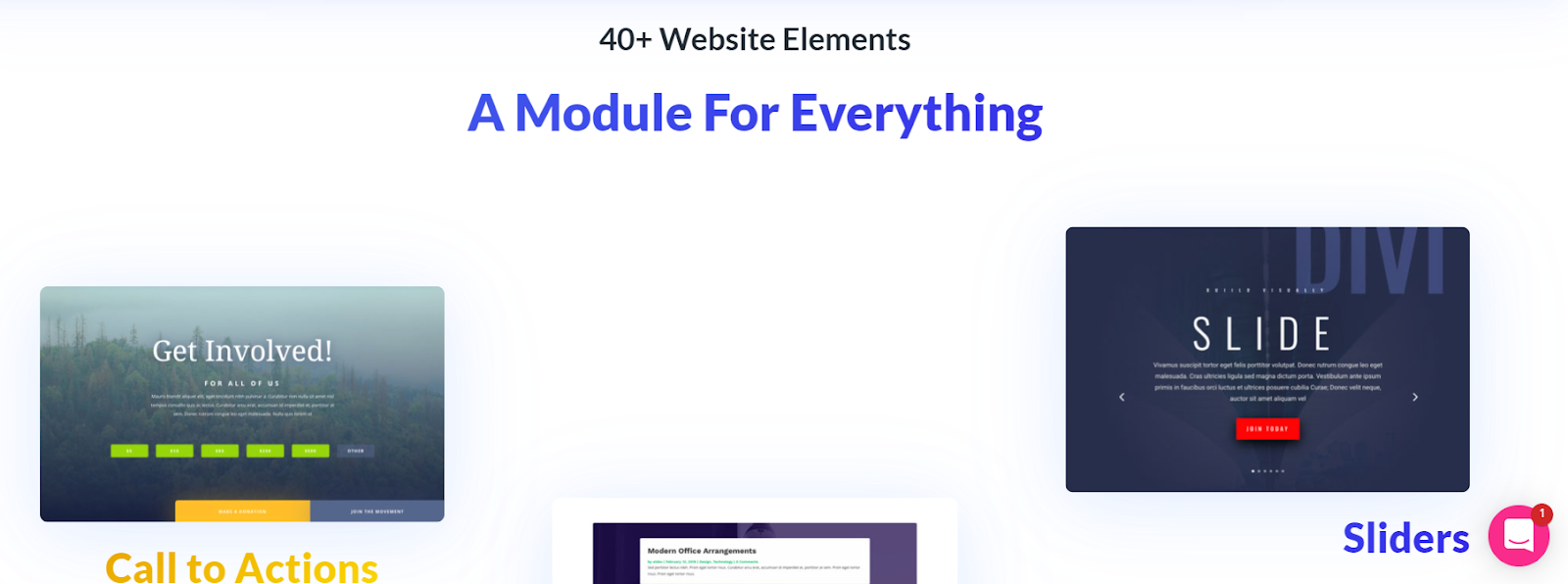
Most of the basic and advanced modules are covered in the Divi Builder. Though, Divi makes it hard to add standard WordPress widgets to the pages, which is not the case with Beaver Builder.
Lastly, Divi modules also have dedicated fields for CSS IDs and classes which make using advanced stylings easier.
Pre-Made Templates
One of the best things about page builders is that they usually come with tons of pre-built templates. These templates can be used to set up your complete website almost instantly.
Yes, you can always build the pages from scratch — but the templates are super helpful if you don’t have the time or a reason to do so.
Beaver Builder Templates
Beaver Builder has dozens of professionally designed templates that are fully responsive and work with all themes. You will get around 30 templates, which is not too many compared to Divi but enough to get started quickly.
You can even take advantage of Beaver power packs, which include up to 350+ more page templates.
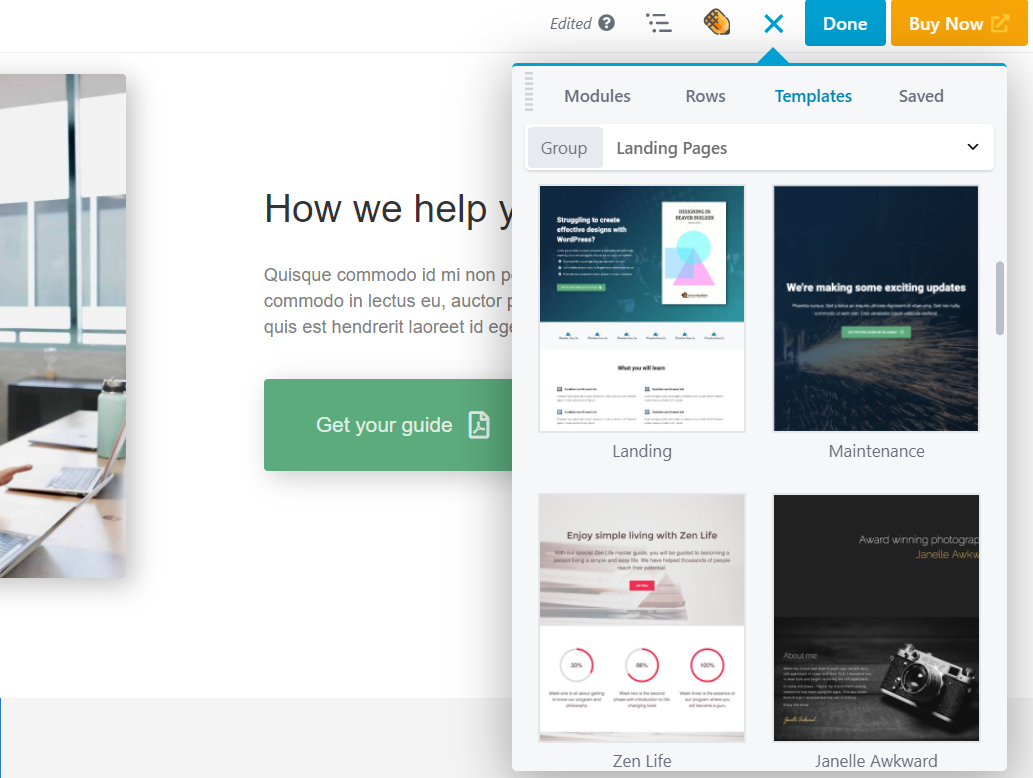
The Beaver Builder templates are divided between the landing page and content page templates.
All the essential page types and topics are included, such as contact pages, newsletter sign-ups, about pages, business/corporate website templates, landing pages, and more.
Divi Builder Layouts
Divi has a massive library of pre-made templates and full website packs. As of now, you can choose from over 880+ pre-made designs and 110+ full website packs. Most importantly, all of these are carefully designed and breathtakingly beautiful.
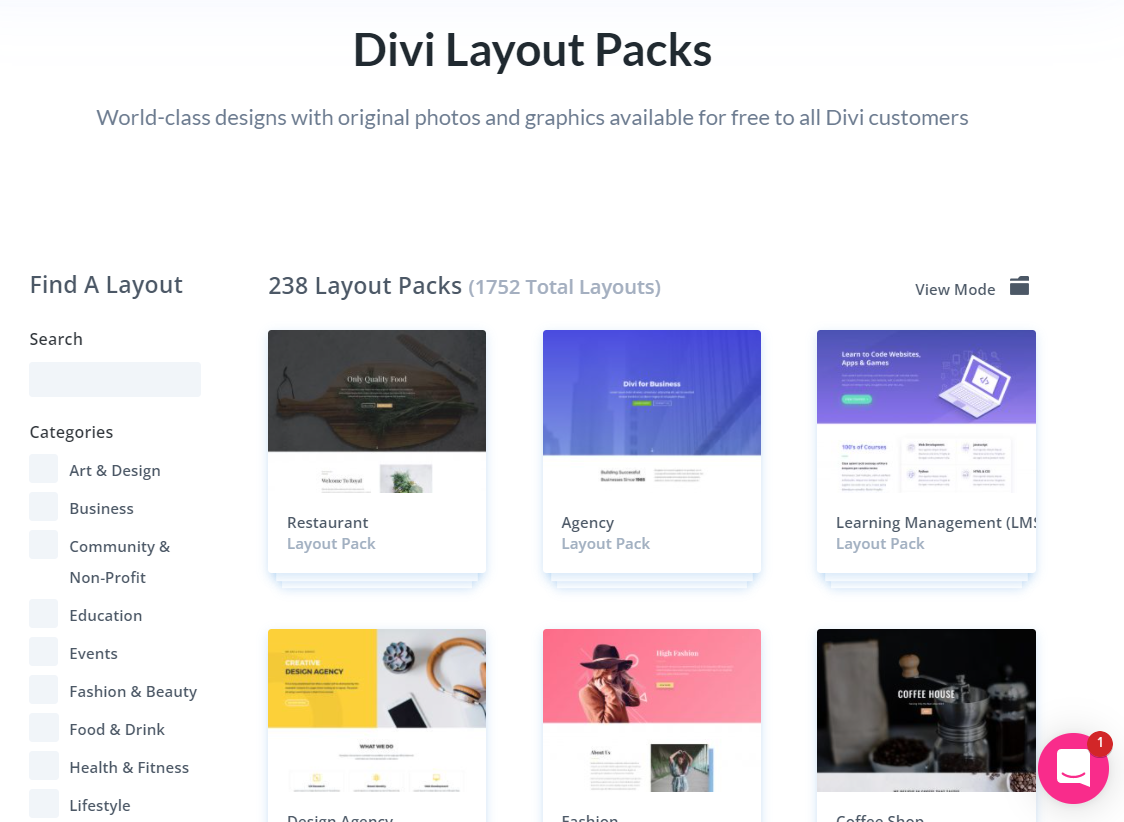
The full website packs are amazing, as every individual website pack is built with the same design concept forming a consistent experience for users. With those ready-made website packs, all pages of your site will fit together really well.
What is also amazing about Divi templates it’s that you can save individual elements of these templates (literally anything you see on the page) independently and reuse them whenever you want.

Divi Premade Layouts
World-class design by Elegant Themes
Simply save the elements you want to your Divi library and add them whenever and wherever you wish. This means thousands of beautiful designs at your fingertips at no extra charge. Very convenient and useful!
So if the number and variety of templates are important to you — you should definitely go with Divi Builder!
Beaver Builder Theme vs Divi Theme
While Divi was initially launched as a standalone theme and then the Divi page builder was released, Beaver Builder also has a WordPress theme now.
The Beaver Builder theme is designed to work with page builders, so the theme includes a blank canvas option for creating full-width designs.
The Beaver Builder theme doesn’t have a dedicated control panel, and everything is contained within the WordPress customizer. The theme is built on the Bootstrap framework with the CSS base to keep the theme foundation strong.
All the HTML5 markups are included in the theme to make it SEO-optimized and so that you don’t have to change the code to add necessary SEO items (such as heading tags and Schema markup).
The Divi theme, on the other hand, is very different from the minimal Beaver Builder framework.
Divi is an all-in-one full-fledged theme with all the features built-in. Though, with recent developments, Elegant Themes have shifted many of the features of the Divi theme to the Divi builder.
When looking at Beaver Builder vs Divi Builder from a theme perspective, the Divi theme is capable of a lot compared to the Beaver Builder theme.
With Divi 4.0, you can take advantage of the Divi Theme Builder that allows you to take complete control over your theme and edit everything: headers, footers, single post templates, WooCommerce layouts, and more.
Check out this detailed video to learn more about the amazing Divi Theme Builder:
Requirements
Both Divi and Beaver have certain requirements to ensure that your hosting environment configuration is ideal. These website builders require almost the same setup, except that Divi offers its own hosting if you’d like.
No matter what, you’ll need a stable environment for seamless running, including hosting, PHP version, memory limit, and more.
Divi
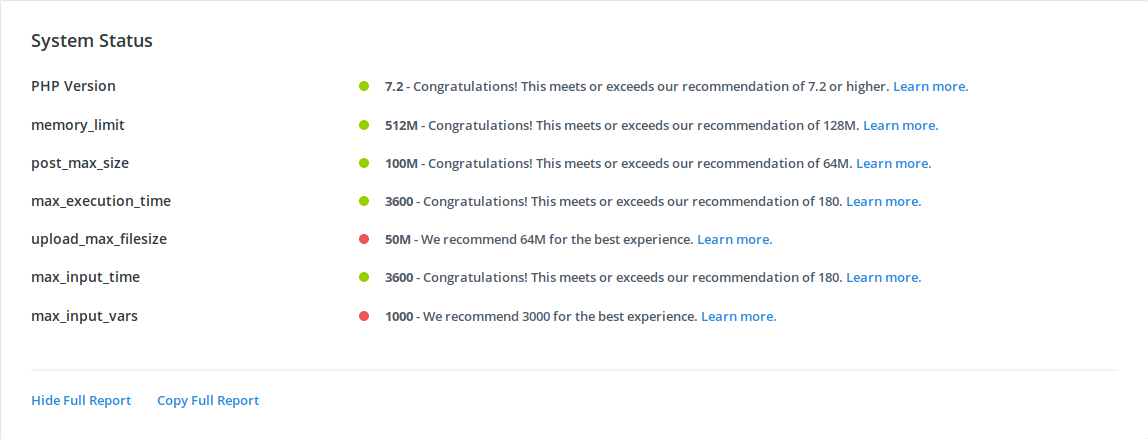
Divi needs PHP 7.2 to work well. Plus, you should have the latest version of WordPress and MySQL for best results.
You will also need reliable hosting. Divi offers Divi Hosting, which automatically activates the website builder function, but you can choose any other quality hosting provider.
In addition, this website builder also offers recommendations for your hosting environment configuration, such as a memory limit of at least 128M, a maximum execution time of 180, etc.
You can get complete recommendations on Divi’s support center.
Beaver Builder
Similar to Divi, the minimum system requirements for Beaver Builder involve WordPress 4.6 or higher and PHP 5.6.20. In addition, make sure you have reliable hosting.
While Beaver Builder doesn’t offer its own hosting, it recommends a list of partners such as GoDaddy and BlueHost. The Beaver website builder also recommends a memory limit of at least 128.
Performance Test: Divi Builder vs Beaver Builder
To test the page speed of Beaver Builder vs Divi, we ran three tests. We wanted to determine the speed of these page builders in different scenarios.
So let’s take a look at the data from these performance tests and find out which is the fastest page builder!
Test #1 (Simple Text with Page Builders)
In the first test, we set up two sites with identical pages (with only a single text line) and the same theme (Twenty Twenty-One).
Here are the results of the first test:
Pingdom Results
| Divi Builder | Beaver Builder | |
| Page Size (kb) | 411.9 | 54.1 |
| Load Time (ms) | 666 | 362 |
| Requests | 16 | 9 |
Google PageSpeed Insights Scores
| Divi Builder | Beaver Builder | |
| Mobile Score | 87 | 100 |
| First Contentful Paint (FCP) | 2.1s | 1.3s |
| Speed Index | 3.7s | 2.4s |
| Largest Contentful Paint (LCP) | 2.1s | 1.3s |
| Time to Interactive | 3.7s | 1.3s |
You can see that Beaver Builder has a lower page size, less load time, and fewer requests than Divi. Most importantly, it scored a perfect 100 on Google PageSpeed Insights scores and reduced FCP and LCP.
Test #2 (Simple Text with Page Builders + Themes)
In the second test setup, we used the following configuration:
- First site: Divi Theme (Divi Builder plugin in-built)
- Second site: Beaver Builder Theme + Beaver Builder plugin
This test is to determine the performance of these two-page builders with their theme installed on the site.
This is important because both page builders advertise that they work best with their themes, so this test will find out if that affects the performance or not.
Pingdom Results
| Divi Builder | Beaver Builder | |
| Page Size (kb) | 411.9 | 54.1 |
| Load Time (ms) | 681 | 380 |
| Requests | 16 | 9 |
Google PageSpeed Insights Scores
| Divi Builder | Beaver Builder | |
| Mobile Score | 81 | 100 |
| First Contentful Paint (FCP) | 2.9s | 1.2s |
| Speed Index | 4.3s | 2.3s |
| Largest Contentful Paint (LCP) | 3.3s | 1.2s |
| Time to Interactive | 3.6s | 1.2s |
After this test, we can see that Beaver Builder is still faster than Divi.
While the Pingdom results of both are pretty much the same even with their respective themes, the first site with Divi theme and builder has taken a hit on its PageSpeed Insights score, reducing score from 87 to 81, and a higher FCP, from 2.1s to 2.9s.
Now let’s see the third and final test where we have used real-world pages to get the performance data.
Test #3 (Content Page with Page Builders + Themes)
In this setup, we have added some content to the pages. Here are the exact content elements we have used in both sites pages:
- Text
- Button
- Accordion
- Image (Image size 64 KB, JPG format)
- Contact Form
The first site with Divi Builder setup created by us for the purposes of this test.
The second site with Beaver Builder setup created by us for this test.
Pingdom Results
| Divi Builder | Beaver Builder | |
| Page Size | 542.2 | 272.3 |
| Load Time | 699 | 529 |
| Requests | 20 | 19 |
Google PageSpeed Insights Scores
| Divi Builder | Beaver Builder | |
| Mobile Score | 76 | 96 |
| First Contentful Paint (FCP) | 2.6s | 1.8s |
| Speed Index | 5.9s | 2.3s |
| Largest Contentful Paint (LCP) | 3.6s | 2.6s |
| Time to Interactive | 4.5s | 1.8s |
In this test, Beaver Builder performed a lot better than Divi again. The Beaver Builder’s site has an amazing PageSpeed Insights score of 96 (compared to just 76 of Divi) and 50% less page size than Divi.
Overall you can see that Beaver Builder is performing consistently better than Divi with its smaller page size, fewer requests, and better PageSpeed Insights scores.
So while Elegant Themes seems to be working on making Divi fast, it still needs a lot of work to compete with Beaver Builder in terms of speed and performance.
SEO: Divi vs Beaver Builder
Beaver Builder and Divi are both SEO-friendly website builders, as they’re 100% mobile responsive and are ready to integrate with third-party plugins such as Yoast or RankMath.
Beaver Builder
The Beaver Builder plugin is a really good Divi alternative that has top SEO standards, as the code is neat and avoids redundancy. For example, this website builder makes good use of code compression and schema markup to make your pages easily discoverable.
The page speed performance on Beaver is also quick and you can boost speed further through optimized CSS, if you like. Ideally, you should download a third-party plugin to get the most of your Beaver SEO.
Divi
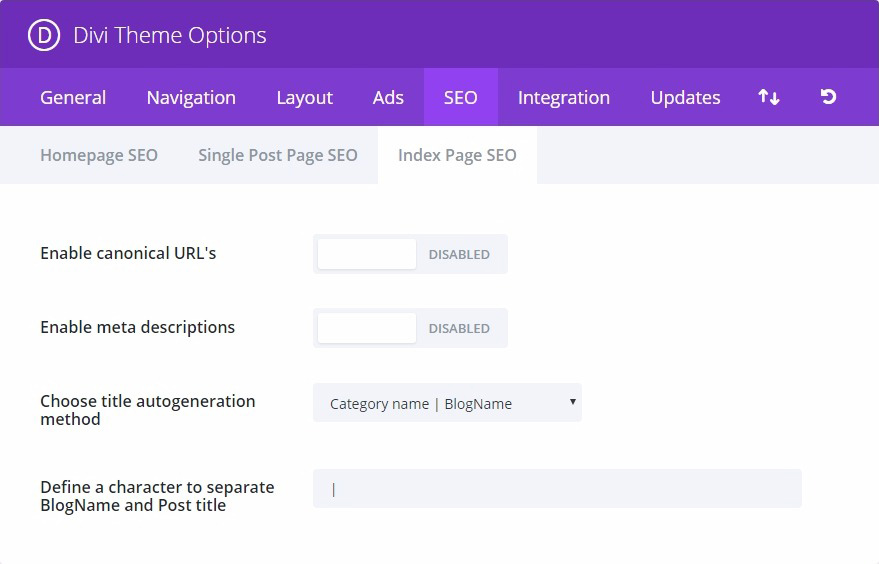
It’s a known fact that Divi is based on shortcodes (obviously this makes code not as neat as Beaver’s) and some experts believe that shortcode-based structure slows down Divi websites.
As we all know, site speed is important for SEO, but it’s not everything.
Therefore, despite the short-code based structure, Divi can still support great SEO. For example, you can enable meta descriptions, meta keywords, and canonical URLs.
You can also extend this website builder’s SEO functionality by downloading a third-party plugin. Divi recommends RankMath, but you can use any SEO plugin of your choice.
Last but not least, your SEO will predominantly depend on your content. The better content you have the better SEO results you can expect with both Divi and Beaver Builder.
Compatibility With The WordPress Gutenberg Editor
Gutenberg, also known as the WordPress default editor, is compatible with both Beaver and Divi in a limited fashion. Basically, by having WordPress 5.0, you can choose between Gutenberg or your website builder’s editor.
Beaver Builder
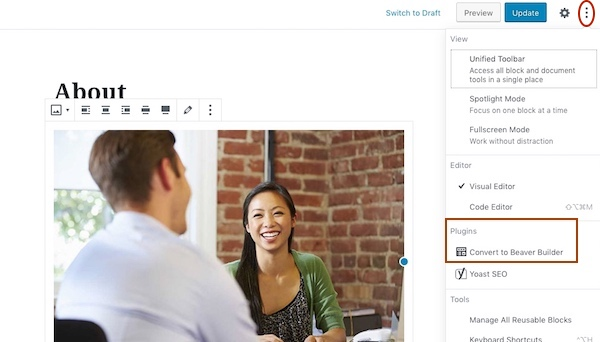
The Beaver Builder for WordPress lets you convert content between the Gutenberg Editor and Beaver through its “Convert to…” feature on the page, post, or block of your choice.
However, it warns against switching back and forth more than once, as some of your data may be lost.
Divi
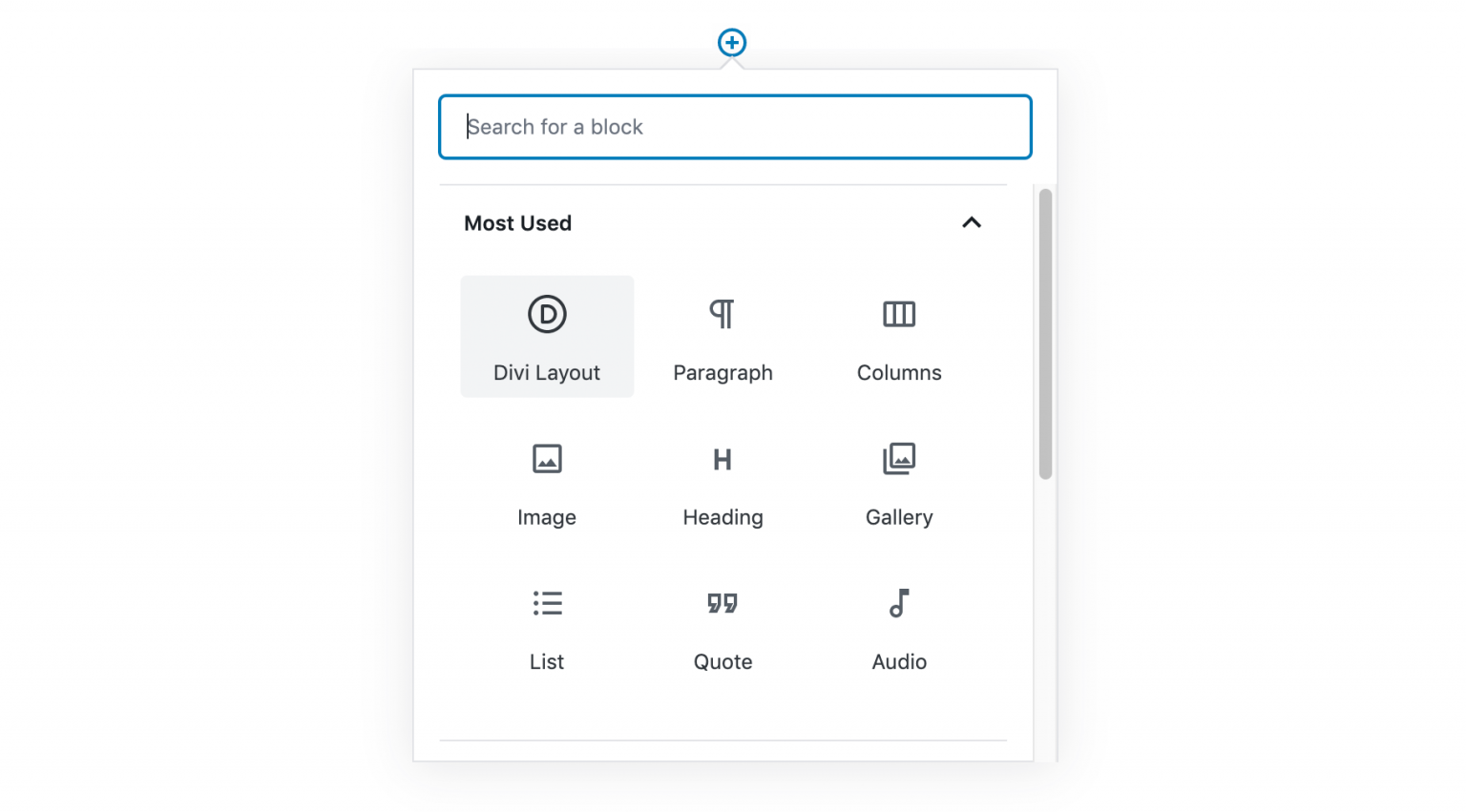
Divi also makes it easy to edit with Gutenberg, if you want to do so.
To edit with Gutenberg, simply click on “Use Default Editor” when you start building your page. As simple as that.
In addition, you can mix and match Divi layouts within Gutenberg using the Divi Layout Block, which lets you enjoy the best of both editors.
Websites Built with Divi and Beaver Builder
Both Divi Builder and Beaver Builder create beautiful, functional sites. To give you a sense of what they’re capable of, here are some great examples of websites built with Divi and Beaver.
Divi
Example #1

This example from Thoroughbred Construction is simple yet appealing. With an excellent color scheme and good use of buttons, this web page offers a top user experience.
Example #2

This stunning site Nomad Capitalist has full-width videos and images, plus it makes good use of elements such as icons, fonts, boxes and colors to accomplish a sophisticated look.
Example #3
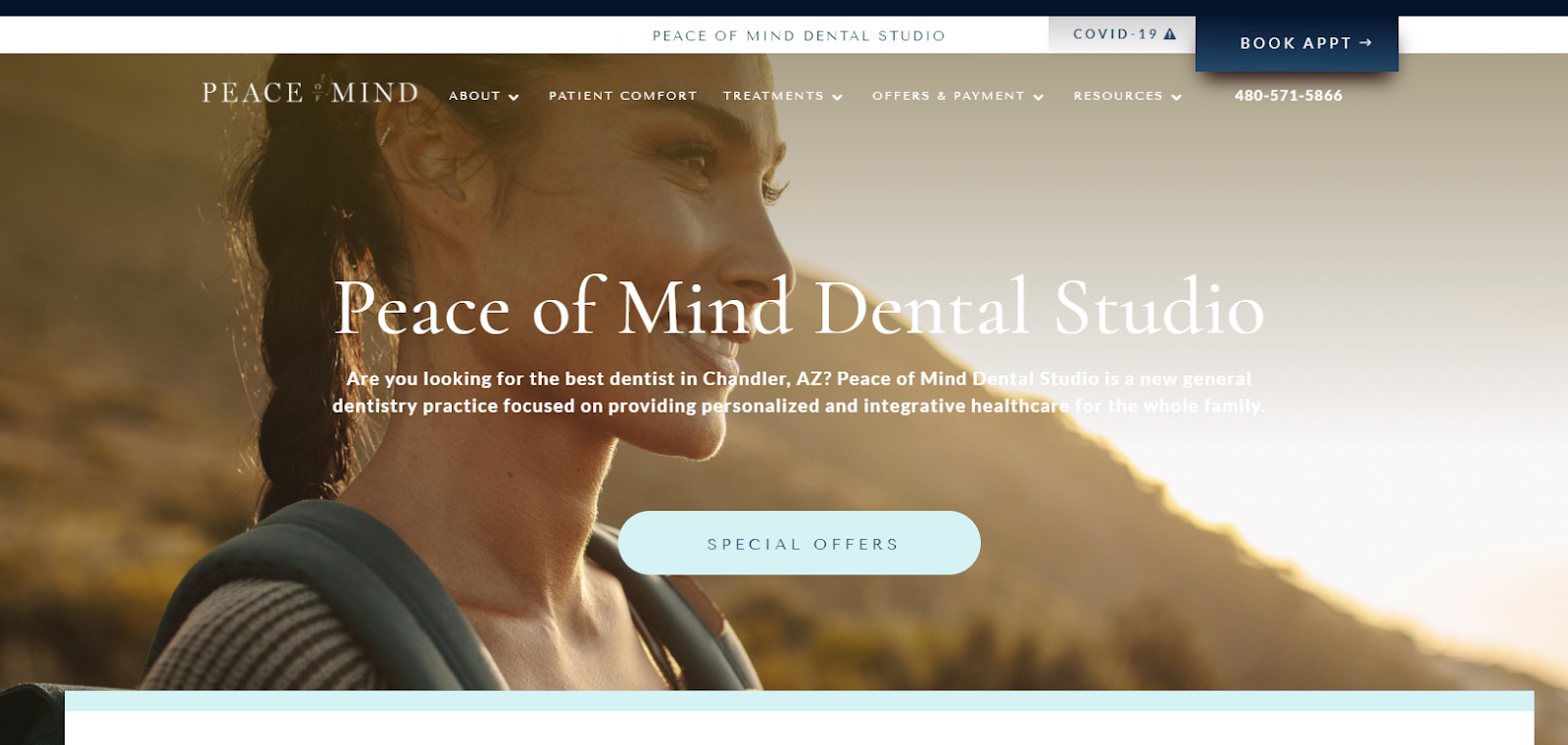
The Peace of Mind Dental Studio has a sleek design, with a beautiful drop-down navigation that makes it easy to find what you’re looking for. It’s got a clean look, yet it’s full of information and resources.
Beaver Builder
Example #1
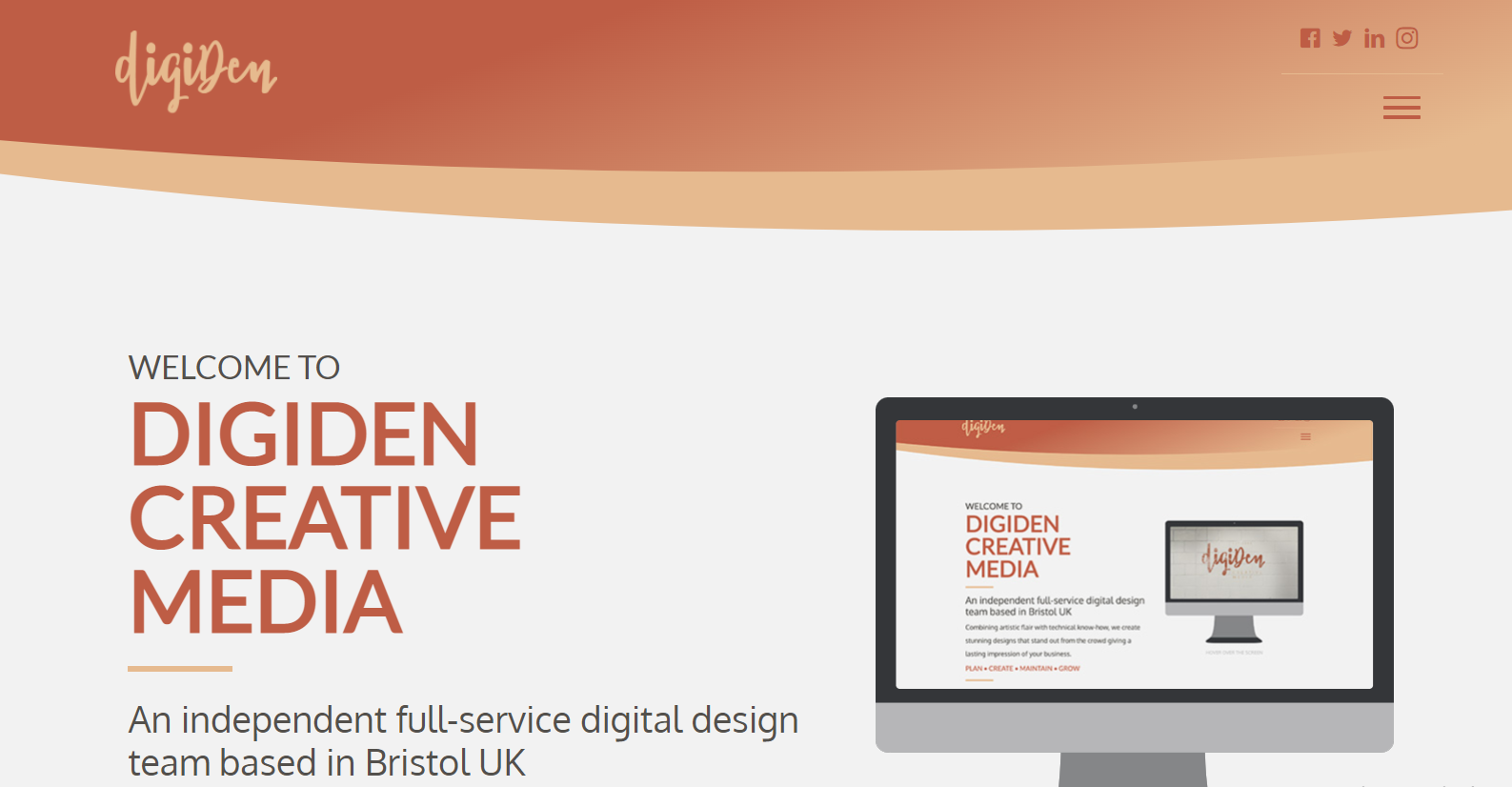
digiDen has an attractive layout, with great use of fonts, visuals and buttons. It also uses photo grids wonderfully as you scroll down the page.
Example #2

Columbia Industry’s site strikes the right balance of effective imagery. With a full-width image and grid buttons, it’s easy (and beautiful) to navigate on.
Example #3
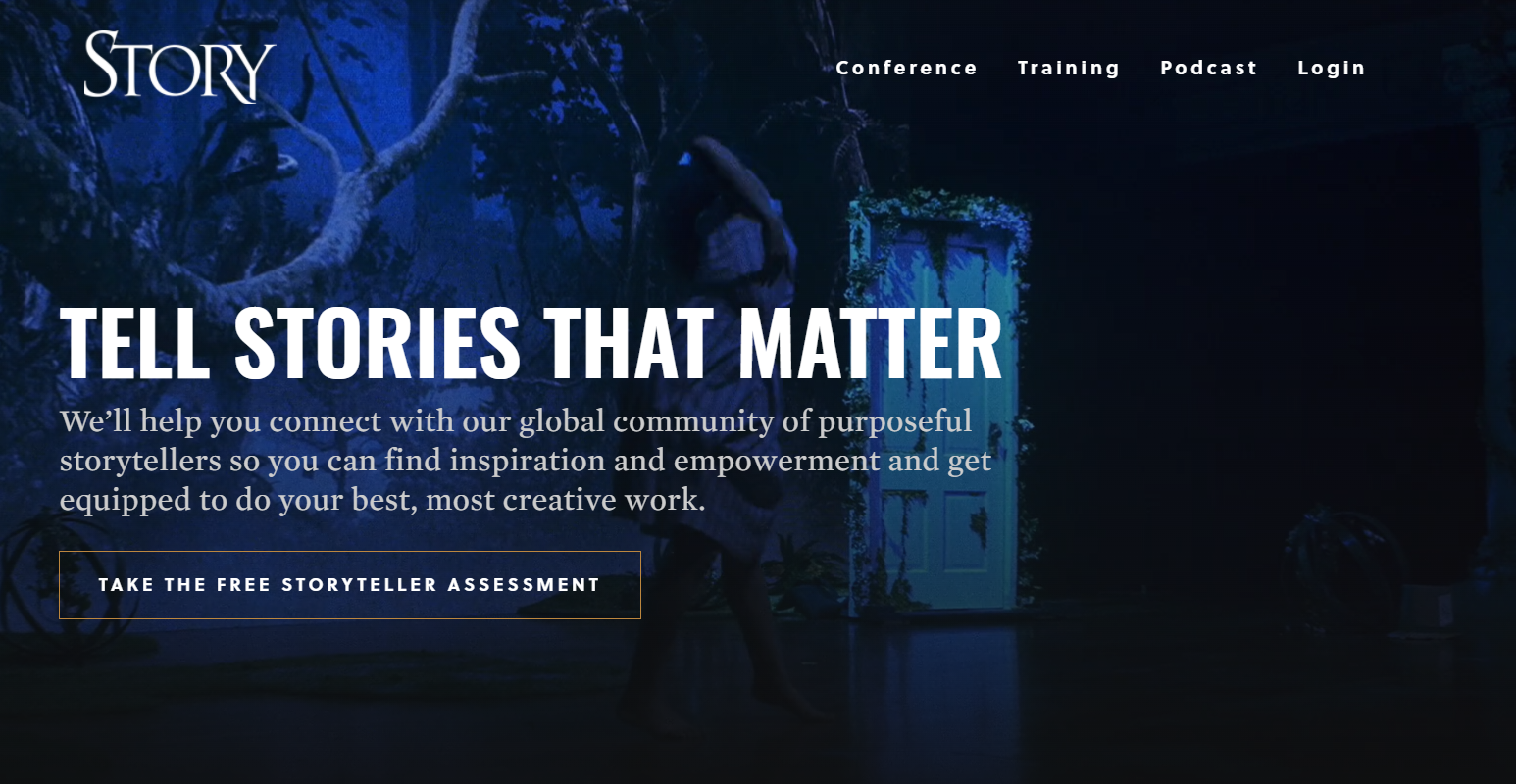
Story Gatherings has an absolutely stunning full-page video hero, but also organizes information well in full-width sections. It has amazing buttons, visuals and animations to showcase its work.
Deactivation: Beaver Builder vs Divi Builder
In case you change your mind or find a new solution, you may want to know what happens to your content if you deactivate the plugin.
Beaver Builder and Divi have some similarities and differences here.
If you deactivate Beaver Builder, you’ll lose all the design, but your content will still be available for you to work with. While it remains visible, you might not like how it looks on the page.
When you deactivate the Divi plugin, your content will be rendered as shortcode instead of normal words.
But it should take a single activation click for both builders to get your content and design back to the state it was before deactivation.
🔔 Note:
As mentioned above, if you are using Divi you can always convert this shortcode mess back to content by reactivating the plugin, so you won’t necessarily lose it. But you may have to manually transfer your content if you’re changing website builders.
Documentation and Customer Support
You can’t go wrong with Beaver Builder or Divi when it comes to customer support.
Both website builders have significant documentation, help centers, and customer support for technical and non-technical issues.
Beaver Builder
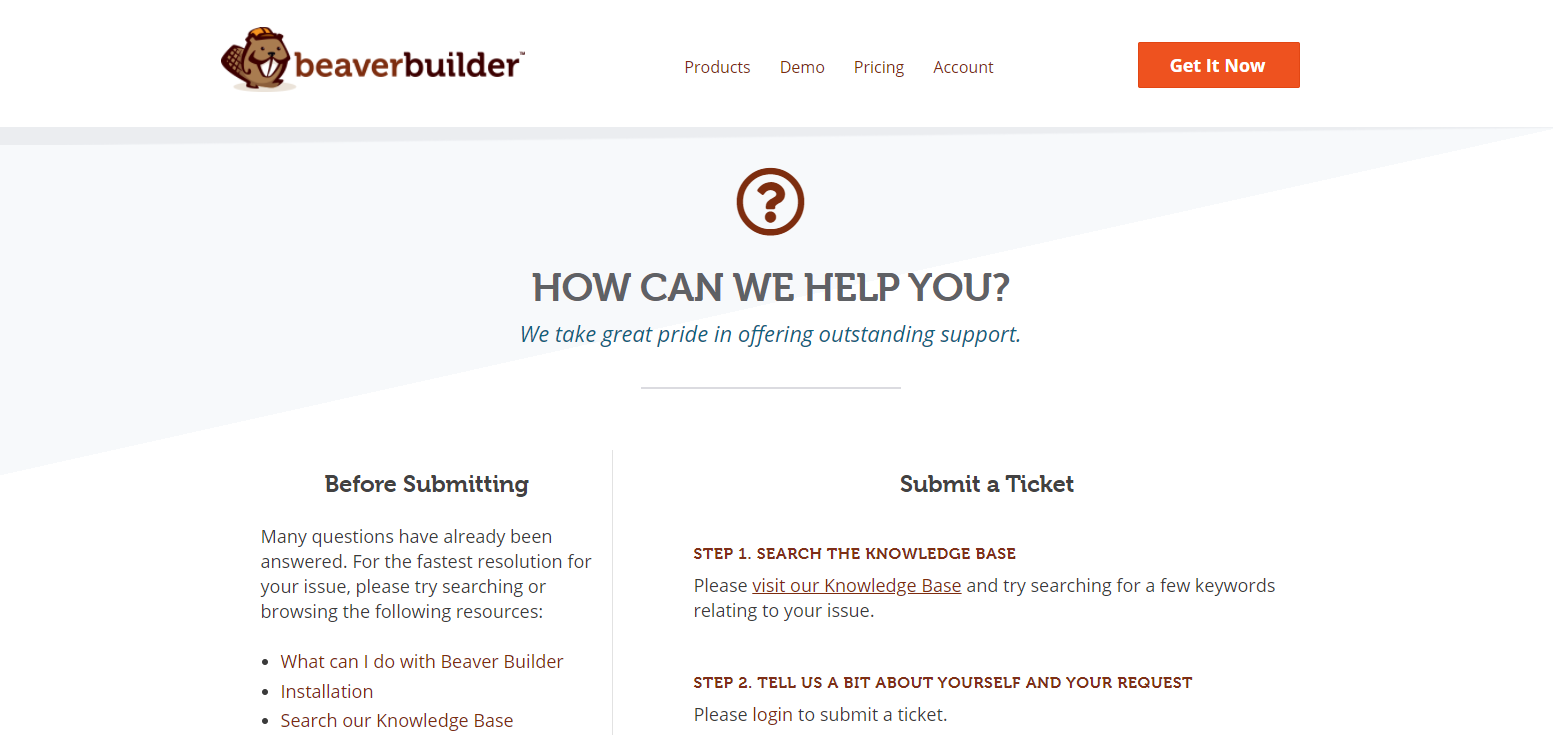
Beaver is highly ranked by customers, receiving 4.5/5 stars on G2. It offers both a knowledge base with step-by-step guides and drill-down topics. This knowledge base is extremely thorough, which can make your life easier.
Not to mention Beaver also has a support system to submit a ticket for any technical issues.
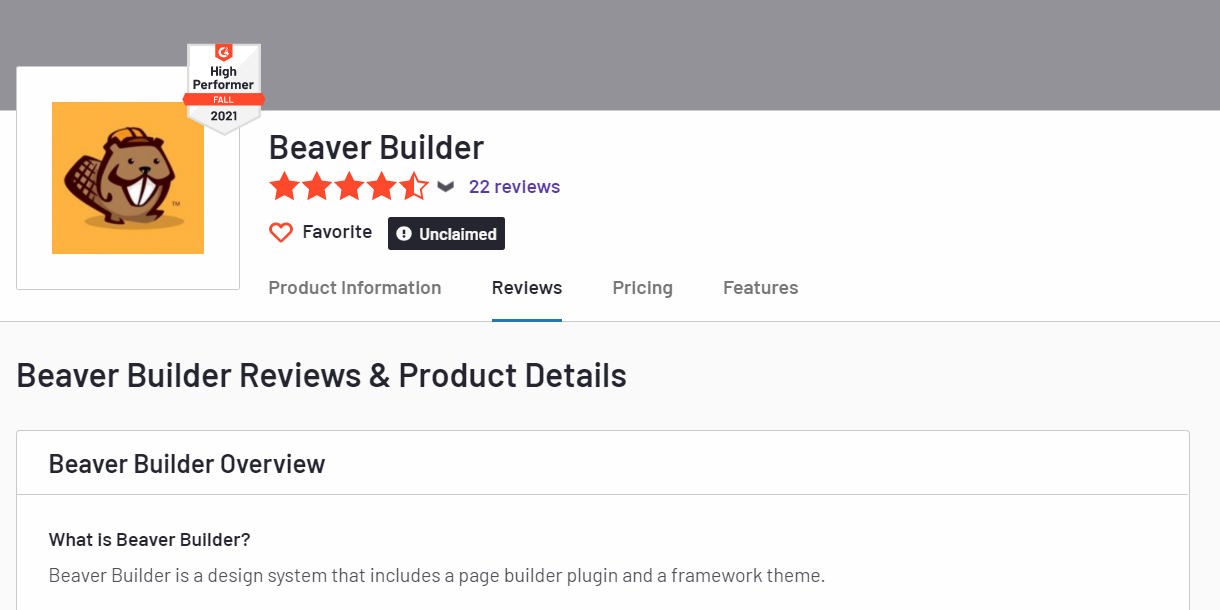
Divi
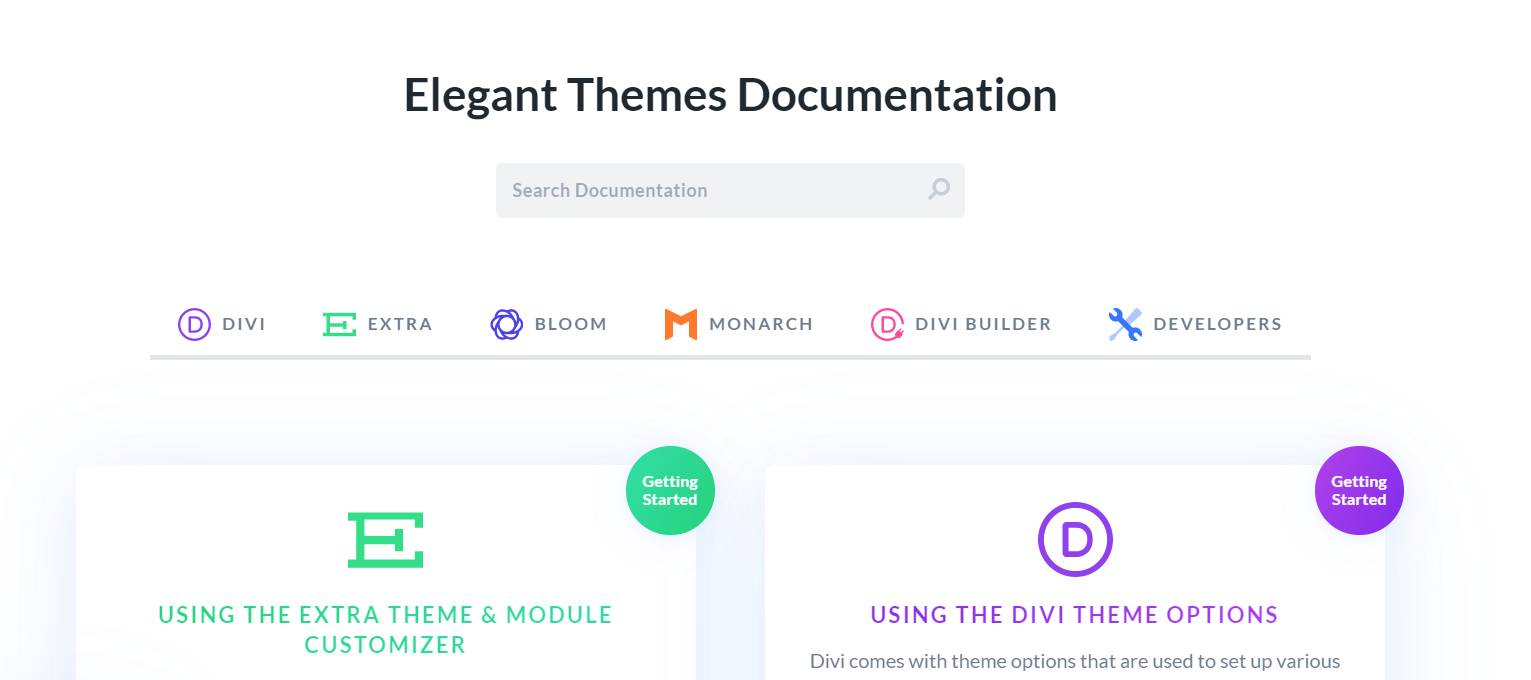
Divi has a robust documentation section, which offers how-to articles and videos on common issues.
These articles are easy-to-follow, so you can get the info you need. Divi’s support center also answers specific questions or problems, as well as updates on new releases.
Finally, you can reach out to Divi on the 24/7 chat support system to get your question answered.
As a bonus, there is a huge Divi community out there, so for most Divi related questions, you can quickly find answers with a quick Google search.
Available Settings
Let’s take a closer look at Divi vs Beaver Builder’s available settings.
Out of the box, Divi offers a more robust panel of settings for you to work with.
However, if you don’t need all the bells and whistles, Beaver Builder has basic settings to get you started.
Beaver Builder
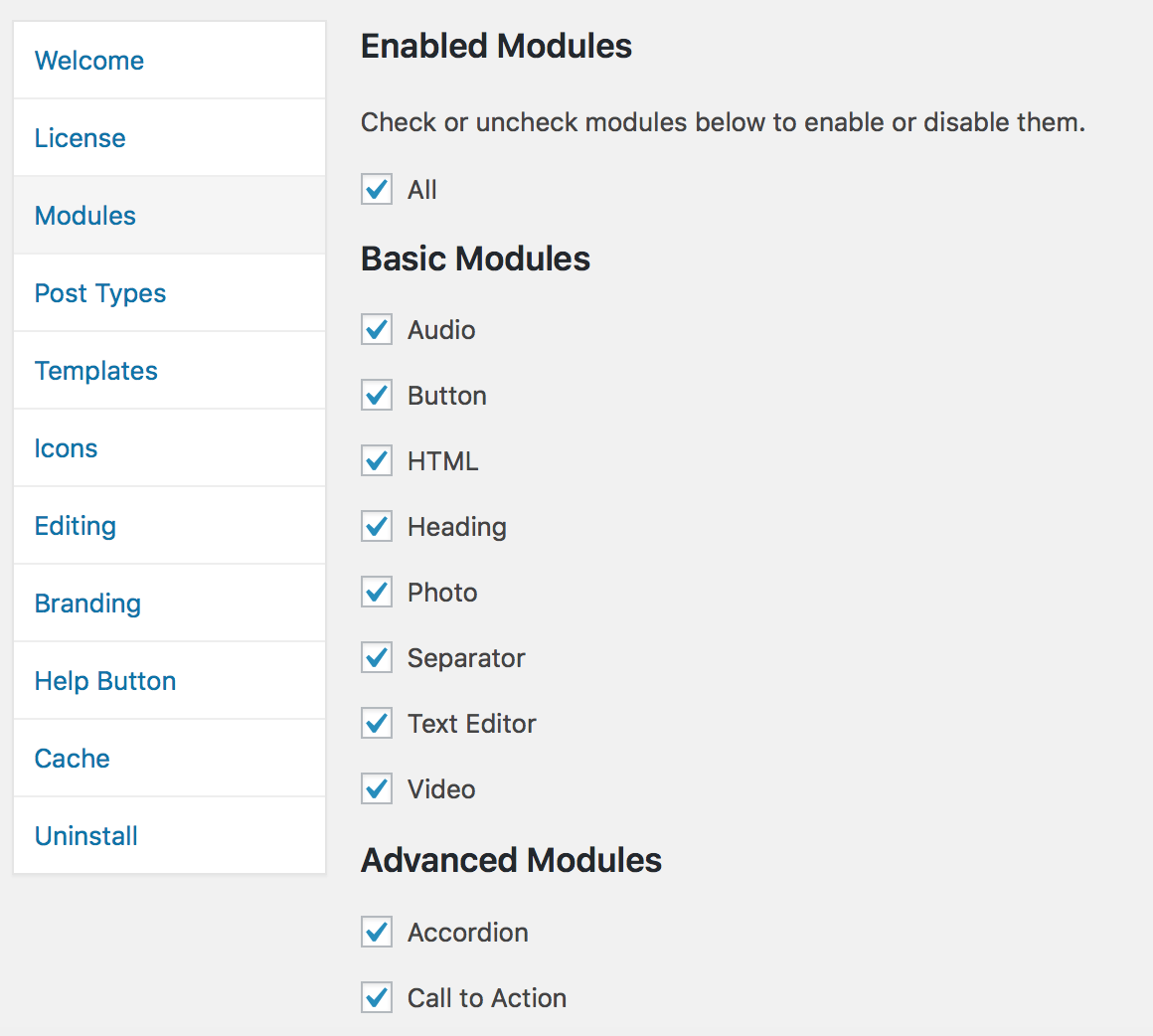
Beaver Builder settings give you access to the most important controls, including turning on/off modules, post types, and icons.
You can also disable WordPress comments and set up user access permissions to manage controls.
Divi
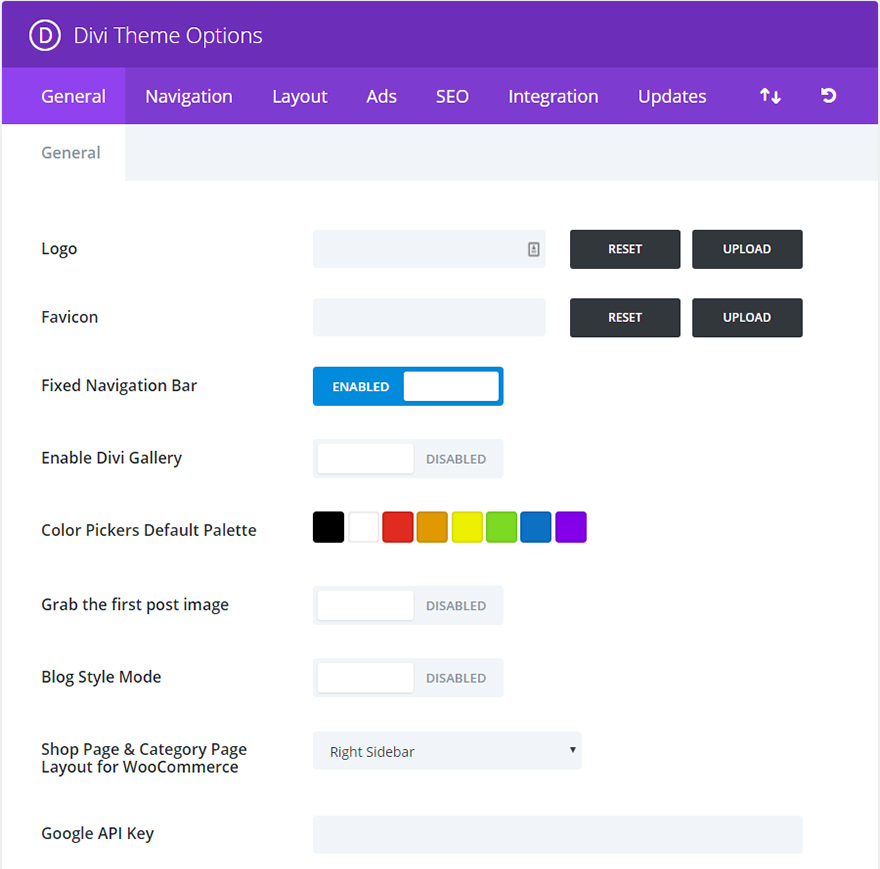
In contrast, Divi’s available settings give you a wide range of choices.
Here you can set up your site’s logo, navigation bar, color palette, and social icons from the General settings.
In addition, you can control more specific matters, such as comments, ads, and SEO options.
Some of the most interesting settings here include the ability to enable the Divi photo gallery (which is a stunning little feature) and to auto-generate thumbnails from the first image of your posts.
These extras go above and beyond the regular settings and may help boost your site visuals.
Third-Party Add-Ons
When deciding between Divi vs Beaver Builder, you may be looking at which allows the best third-party add-ons.
Luckily, both tools give you access to exciting third-party builders.
Beaver Builder
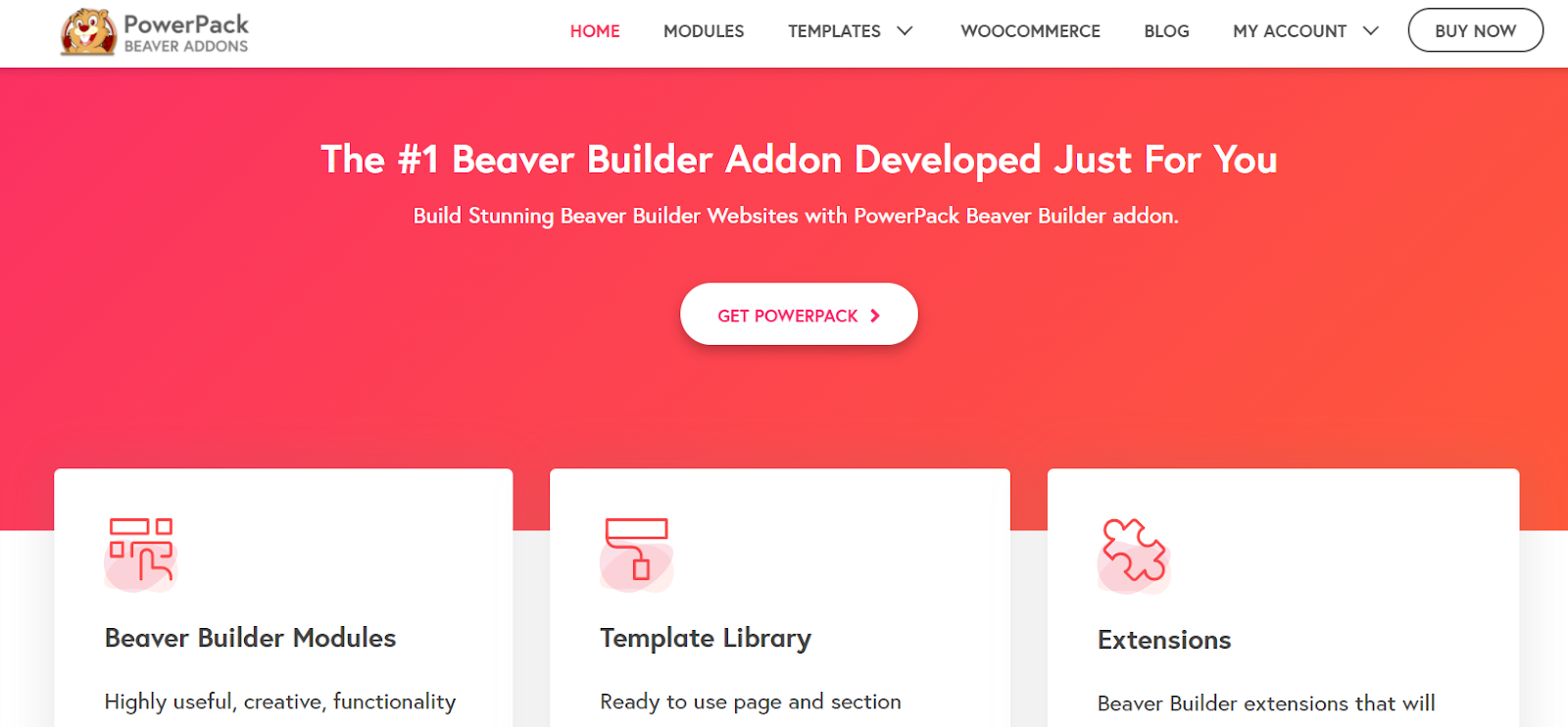
Beaver Builders offers a PowerPack with 70+ modules and 350+ row and page templates. These include professional, mobile-optimized designs, as well as useful modules such as table of contents, social sharing, and sliding menu.
You can also enjoy third-party plugins from other developers such as Ultimate Addons, or simply download plugins from WordPress that are compatible (most are!).
Divi
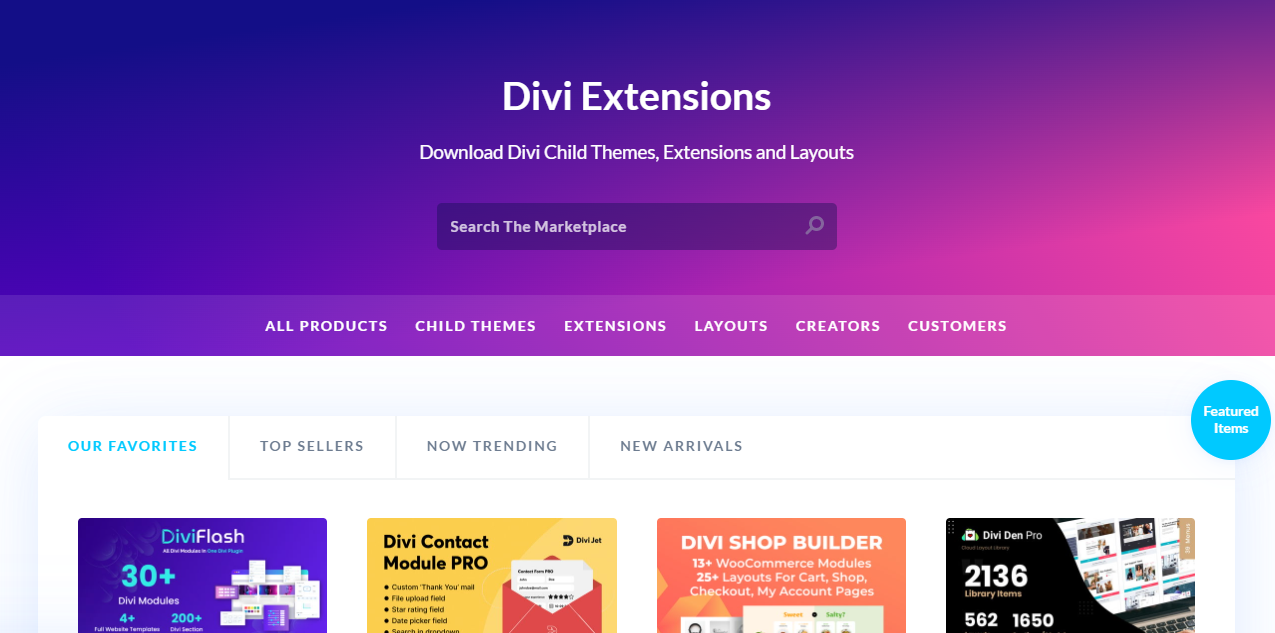
Divi also has excellent addon plugins besides its own Bloom and Monarch.
It even recommends some of its favorite third-party add-ons, such as Divi Booster and Divi Switch, which both give you 50+ new configurable options.
Other must-have Divi add-ons include plugins such as an events calendar, blog extras, carousels, and more. There’s plenty to choose from!
⚡ Check also: Beaver Builder vs Elementor
Mobile Responsiveness
In regard to responsiveness, Divi and Beaver are both mobile-first builders that offer tools for great mobile web design. Since you can customize mobile settings, it’s easy to tweak the design to make the content render correctly.
Beaver Builder
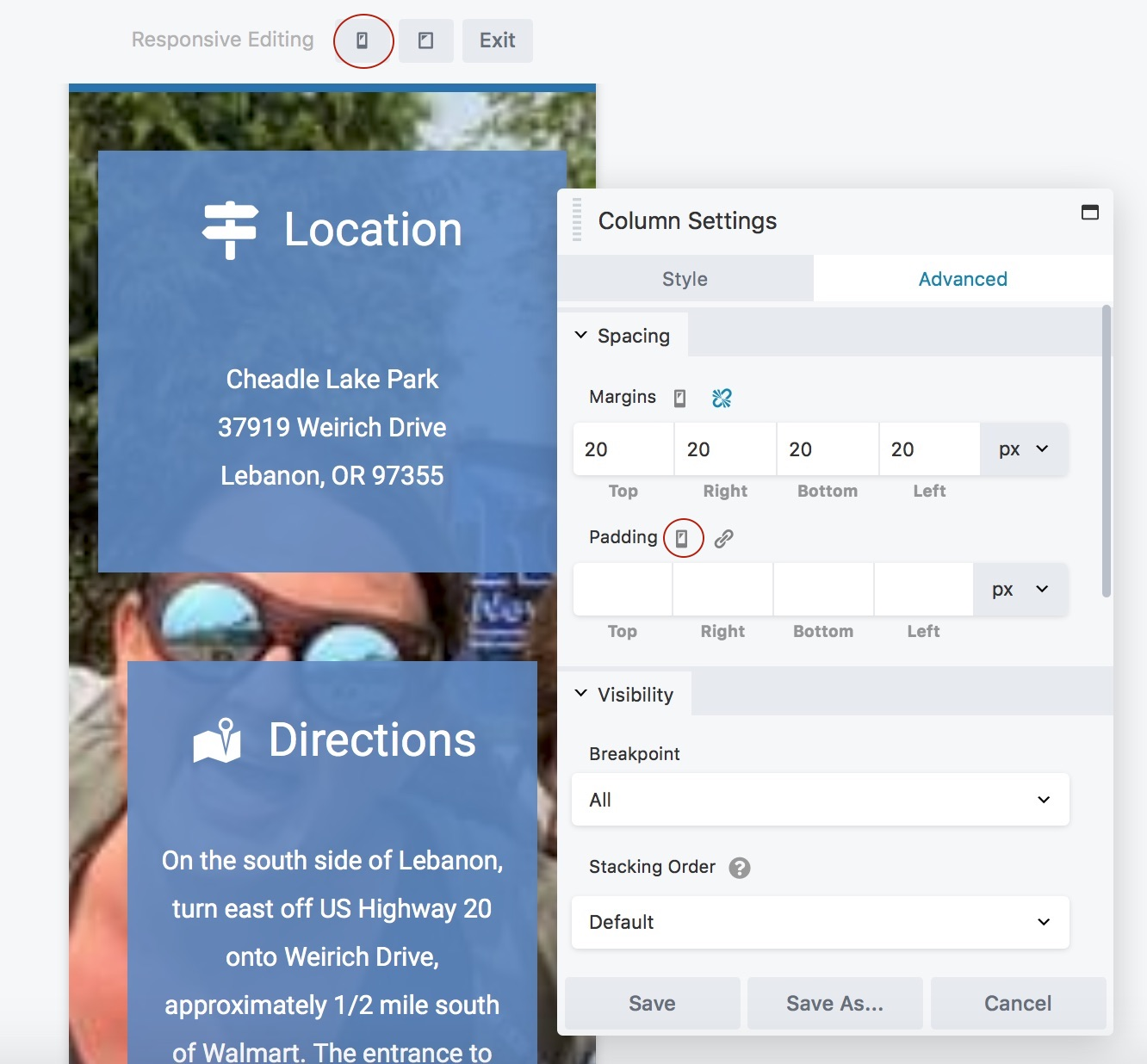
To start, the Beaver theme will give you the best results. However, you can choose any mobile-friendly theme and tweak some settings to make it look great.
Under the Responsive Editing Mode, you can set different settings between desktop, tablet, and mobile.
You can even build responsive layouts on the page using the Beaver Themer tool, in case you need something more customized.
Divi
Divi also boasts of a Responsive Editing format with views and settings for desktop, tablet, and mobile.
It’s easy to make customized settings so everything renders well on mobile. You can even use the Divi Responsive Helper, which is a toolkit for boosting your Divi features for mobile. This can streamline the mobile web design process as well.
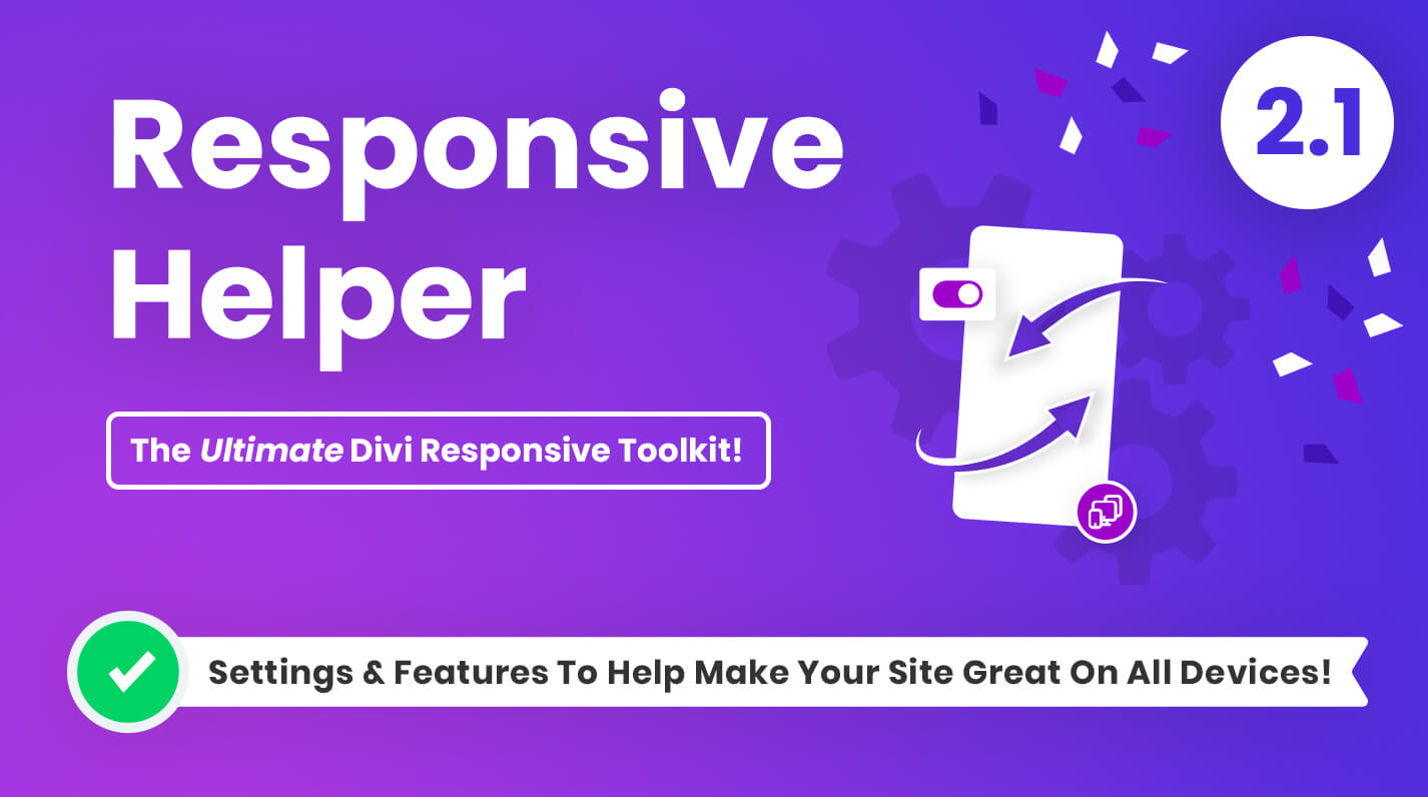
Theme Compatibility
Let’s review the theme compatibility differences between Beaver Builder vs Divi Builder.
Like any page builder, the choice of your theme is key, as some are more compatible than others.
That said, there are plenty of options for compatible themes for both WordPress Beaver Builder and Divi, and you can customize basically any theme in order to make it look amazing.
Beaver Builder
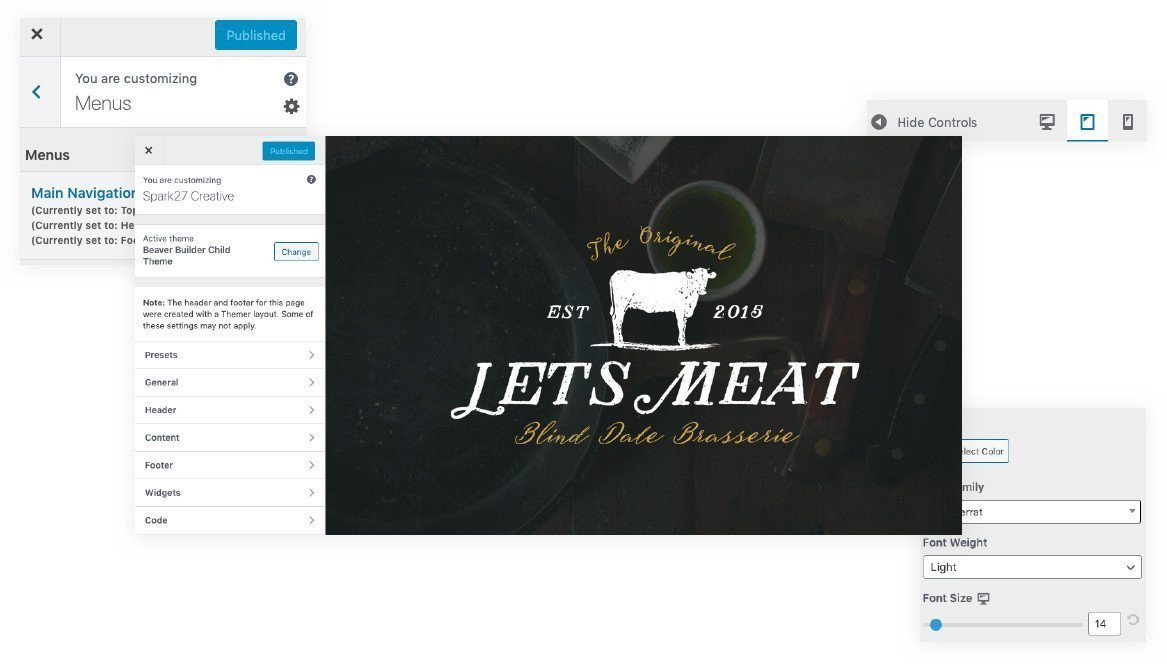
Besides Beaver’s own theme, you can choose from dozens of compatible ones.
Beaver Builder recommends a few top compatible themes, including Page Builder Framework, GeneratePress, Astra, and Genesis Framework.
Of course, you can also transform any WordPress theme of your choice using the Beaver Builder Themer!
Divi
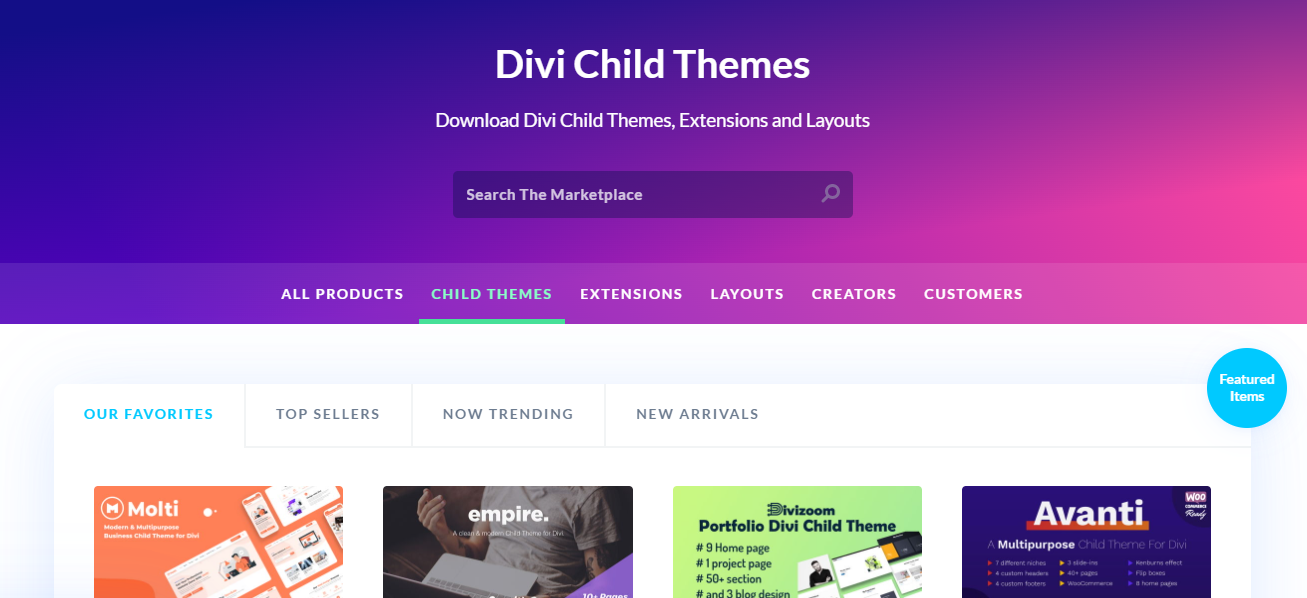
Divi’s own theme will always be the most compatible, but you’ve got options.
One plus of Divi is the huge number of layout packs it offers. You can also pick from its huge marketplace of themes, which include top ones such as Molti, Avanti, Phoenix, Josefin, and more.
Regarding third-party themes, Divi should work with no issues on any WordPress theme.
Pros and Cons
Beaver Builder
Pros
- Simple and user friendly
- Free version available
- Clean code and no shortcodes problem
- JavaScript code editing with live preview
- Extremely fast to work with
- White labeling option for agencies
- Multisite capability
Cons
- Pricey — especially if you choose the Beaver Builder theme
- Limited pre-built templates
Divi Builder
Pros
- Very powerful Divi visual builder
- Backend view and wireframe option
- Great value for money with the lifetime plan
- Huge library of professionally designed pre-built layouts
- Comes in bundle with Bloom and Monarch
- Different inbuilt marketing features such as split testing and lead generation tools
Cons
- Shortcodes-based approach so no clean code (but this is okay if you have no plans to change page builders)
- Needs more server resources and can be a little slower at times
- No free option available (you can try the demo version instead)
Which One Should You Choose?
You can’t go wrong with either Beaver or Divi. Both are excellent tools that may be perfect for your website.
To help you choose between Divi vs Beaver Builder, here are some guidelines:
You Should Use Beaver If:
You want an easy-to-use editor that doesn’t have a big learning curve. You want great site performance and clean code, without any shortcodes problems. You want to try out a free version before making the commitment.
You Should Use Divi If:
You want access to hundreds of pre-made templates, as well as a huge marketplace of themes and plugins. You want options to highly customize your site. You want the long-term investment of a lifelong purchase, instead of yearly subscription.
Pricing: Divi vs Beaver Builder
When it comes to pricing, it’s important to note that both Beaver Builder and Divi include unlimited websites, meaning that there is no limit on the number of sites you can use the page builders for.
Beaver Builder Pricing
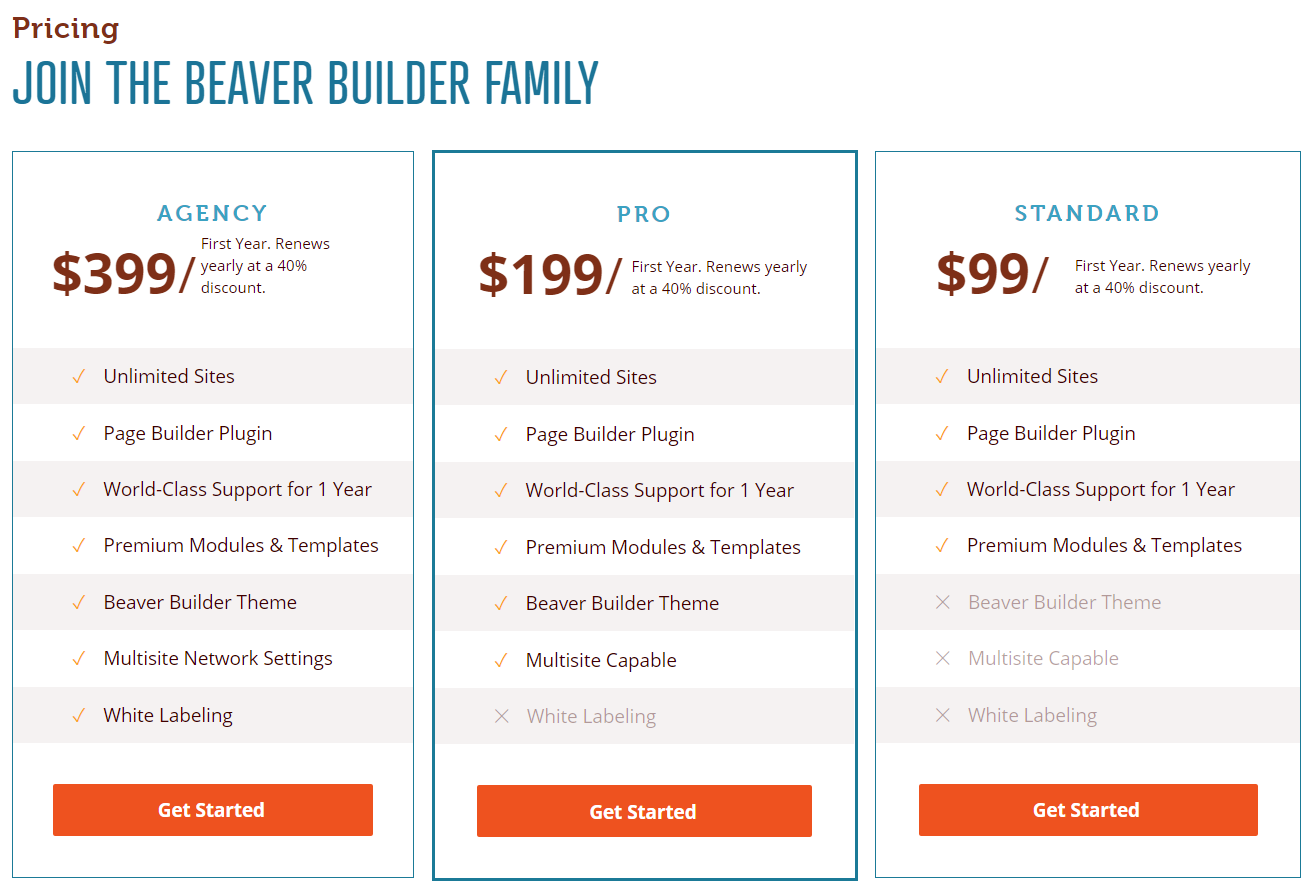
- Forever free plan with limited modules
- Standard plan at $99 with unlimited sites license
- Pro plan at $199 and everything of Standard plus Beaver Builder theme and multisite capability
- Agency plan at $399 with everything from Pro plan plus white labeling option
Divi Builder Pricing
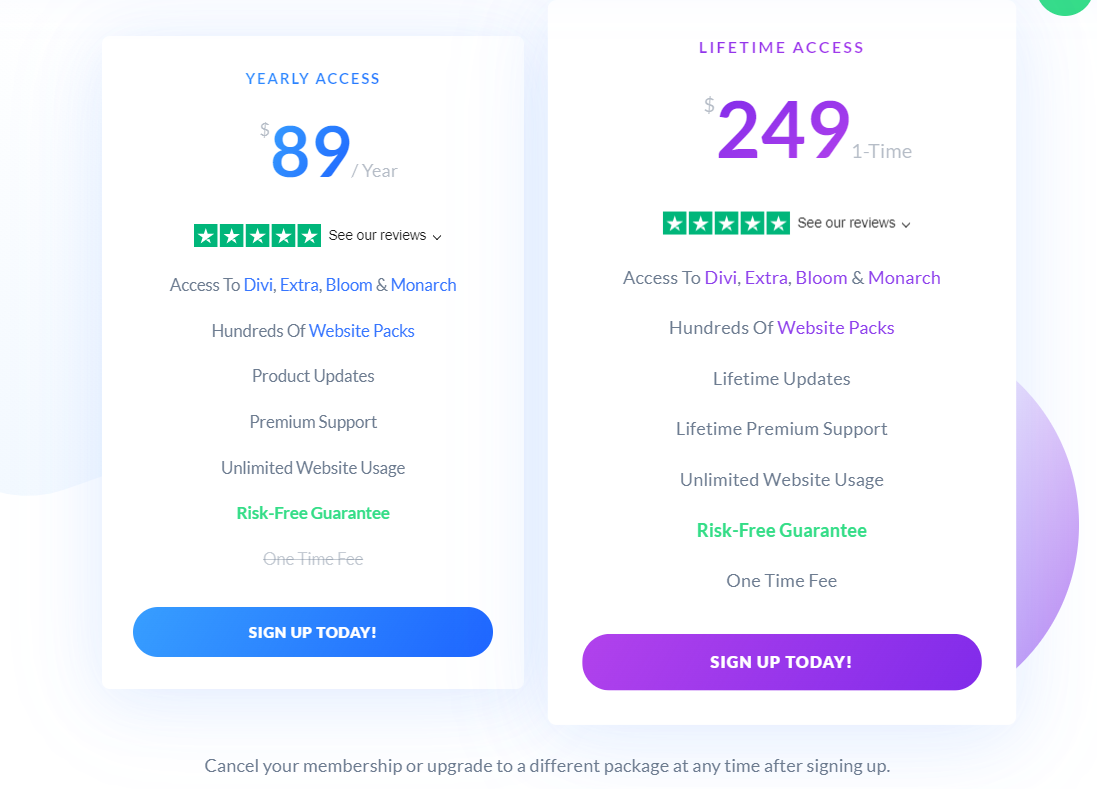
- Yearly access plan at $89 per year which includes access to all Elegant Themes products (Divi, Extra, Bloom and Monarch), hundreds of website packs, premium support, and unlimited website usage.
- Lifetime access plan at $249 one-time payment and no recurring yearly charges afterwards.
Compared to Divi, Beaver Builder is costlier, especially if you look at Beaver Builder vs Divi starting plans. To get the Beaver Builder theme, you will have to spend more, while Divi Builder comes with the Divi theme in both yearly and lifetime plans.
So before deciding, you can try the demo of both page builders and get the one you think is best for your needs.
There’s also a 30-days no-questions-asked refund policy with both page builders, so it’s absolutely risk-free. If you don’t like it, you can ask for a full refund.
Final Thoughts on Beaver Builder vs Divi Builder
When comparing Divi vs Beaver Builder, both are just great for bloggers, small business owners, SEOs, experienced developers, and anyone else looking to build their websites without coding.
Divi is a good Beaver Builder alternative for beginners and provides hundreds of pre-made templates that streamline the whole website design process.
If you’re a freelancer or run a web design agency, Divi will be a good investment for you as you don’t have to pay on a recurring basis with the Elegant Themes lifetime plan and can use their products for an unlimited number of websites.
Beaver Builder is another robust WordPress page builder with all the basic features and necessary customization options. The lite version is also nice to try before you upgrade to the premium version.
Both products are excellent and it’s really hard to go wrong with any of them, so it’s more about your personal preferences here.
We hope our comparative analysis above helps you better understand which builder better meets the needs of your WordPress website.
Beaver Builder vs Divi – FAQ
It’s normal to have questions as you choose between Beaver vs Divi. Here are some of the FAQs that come up most often.
🎨 Check the ultimate Divi review here ➡️
🔔 Check Also:

